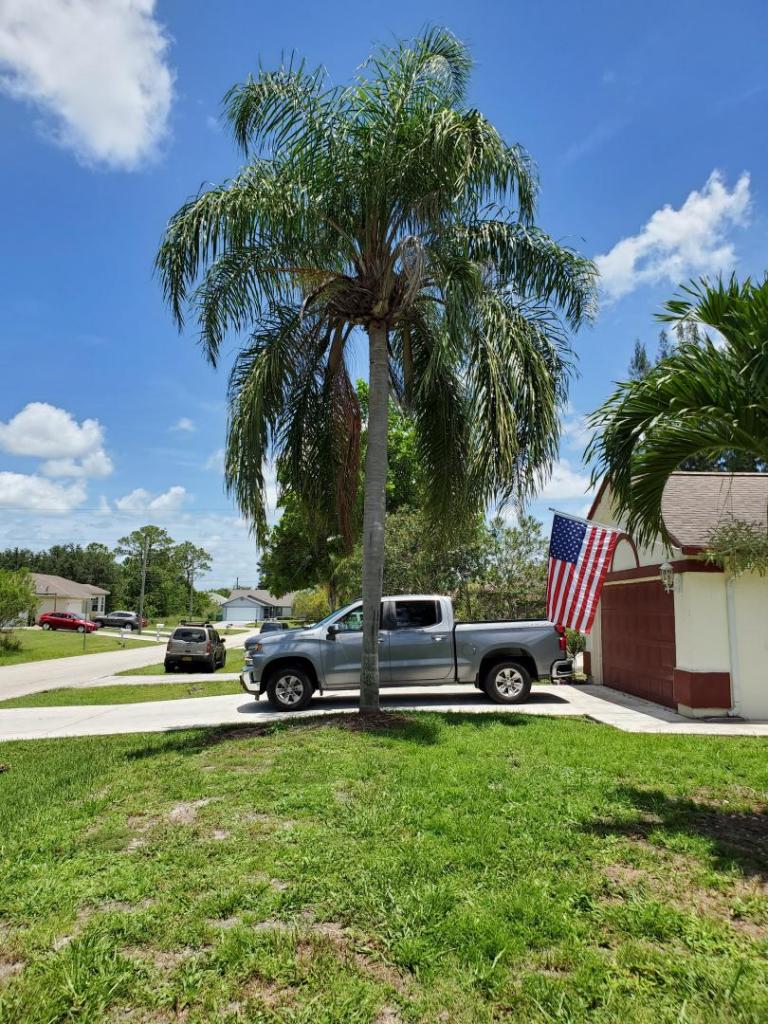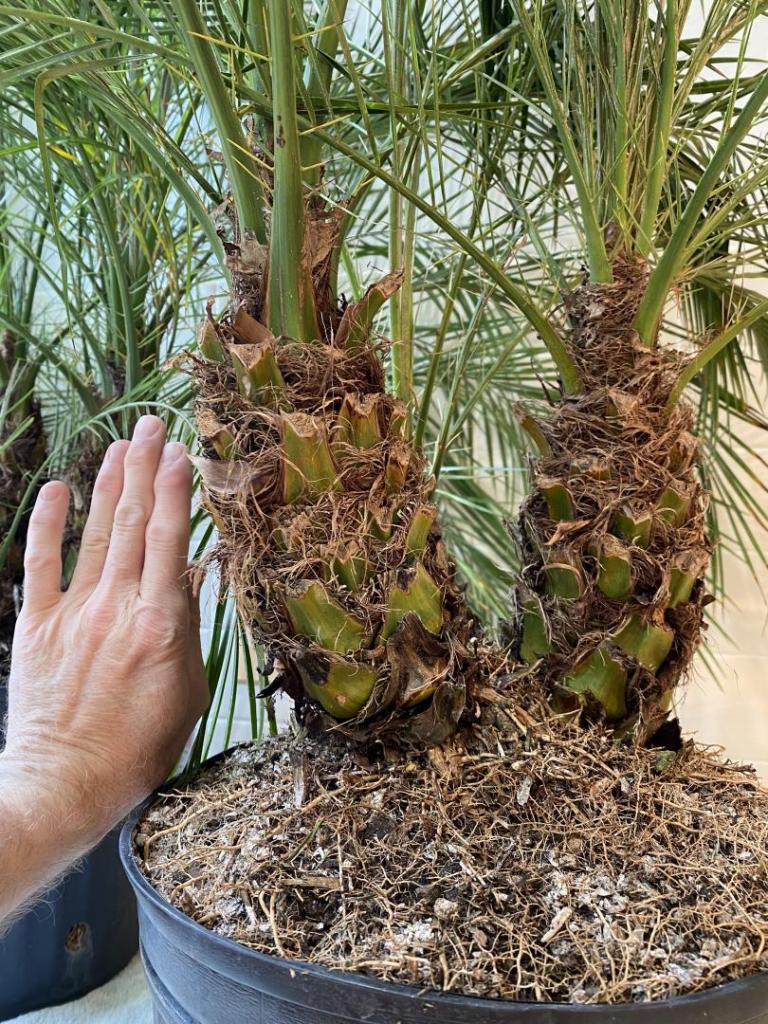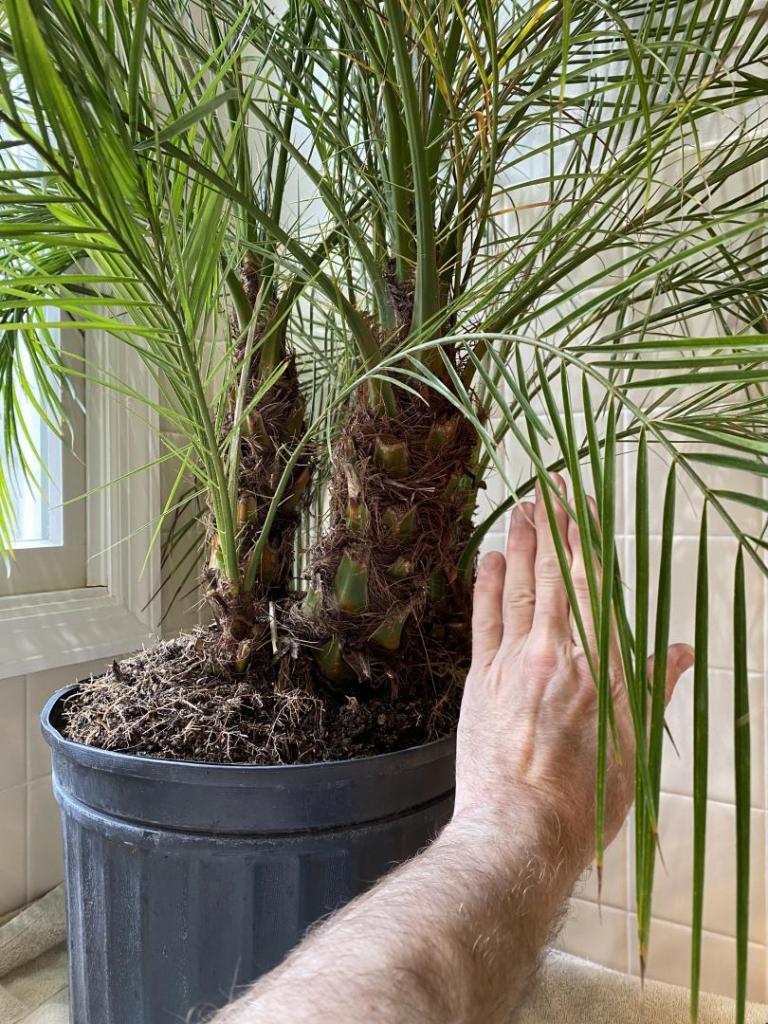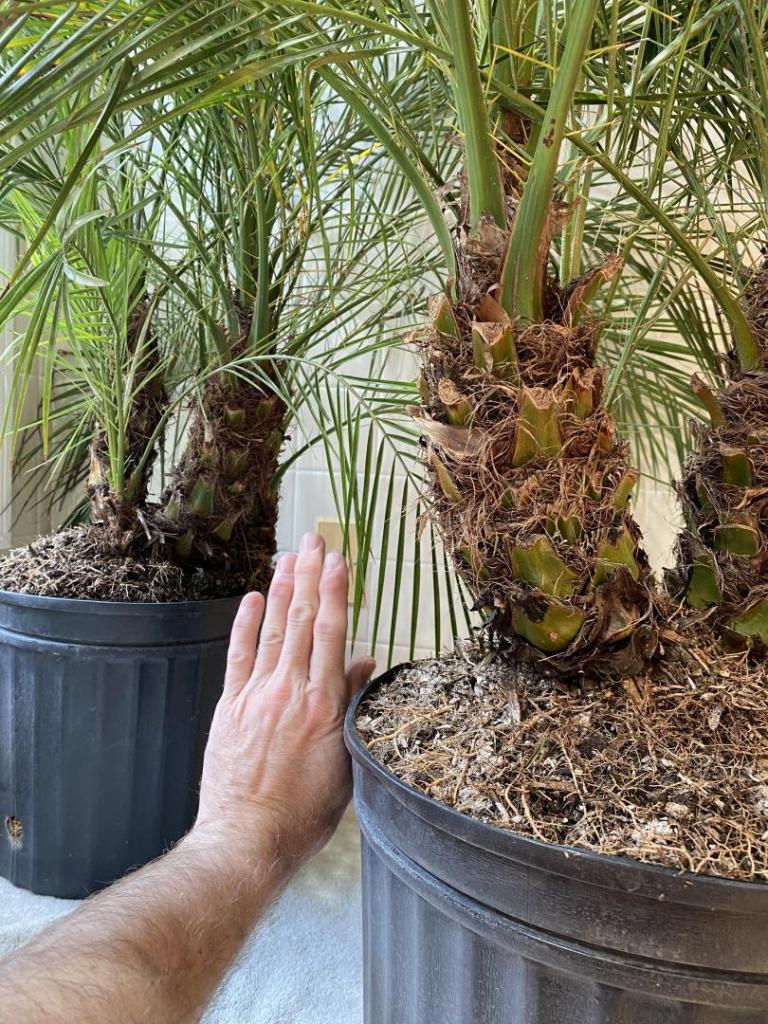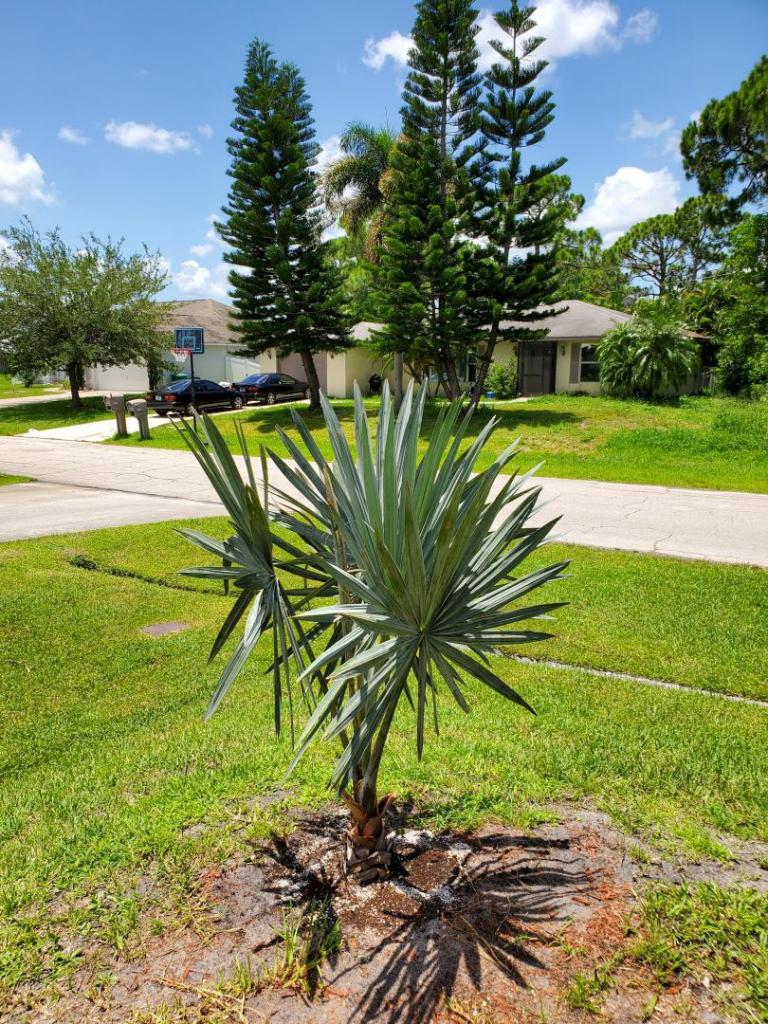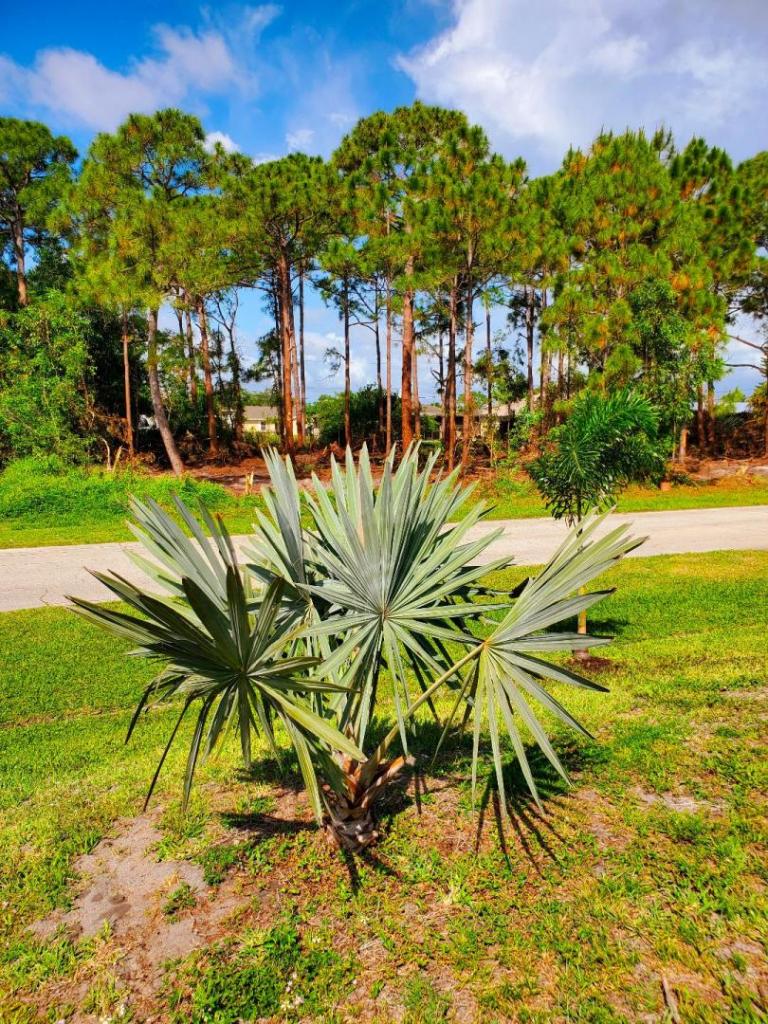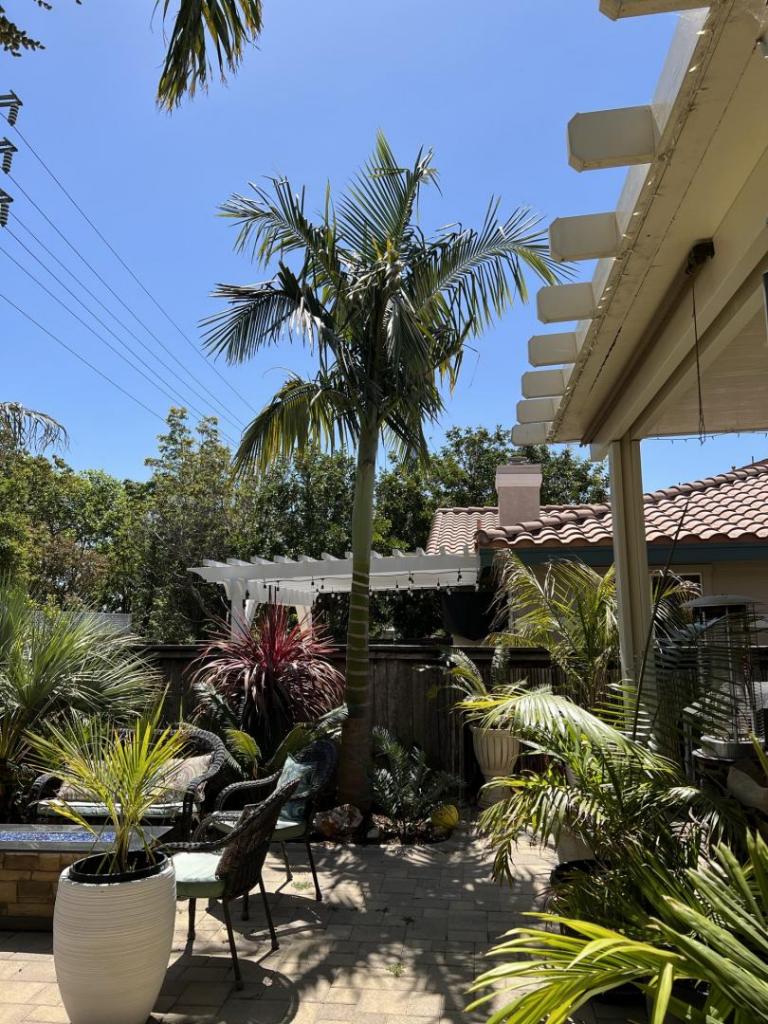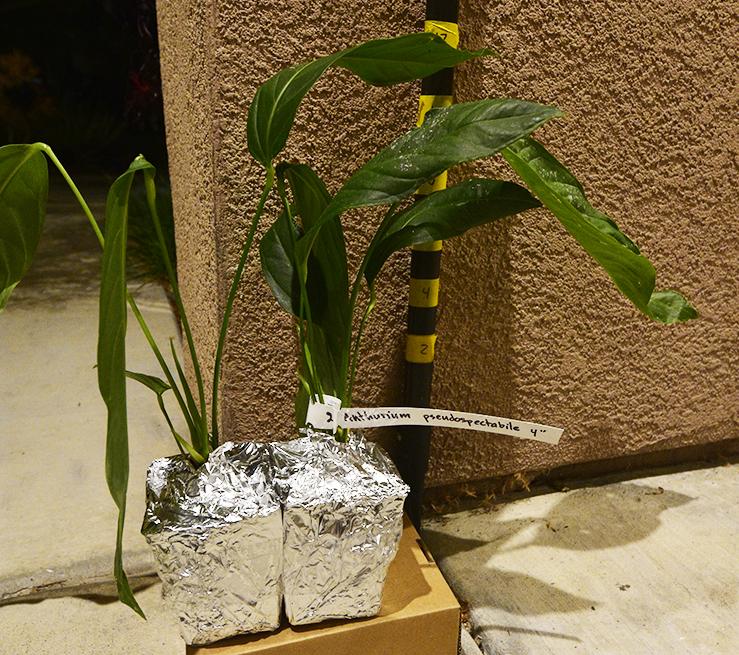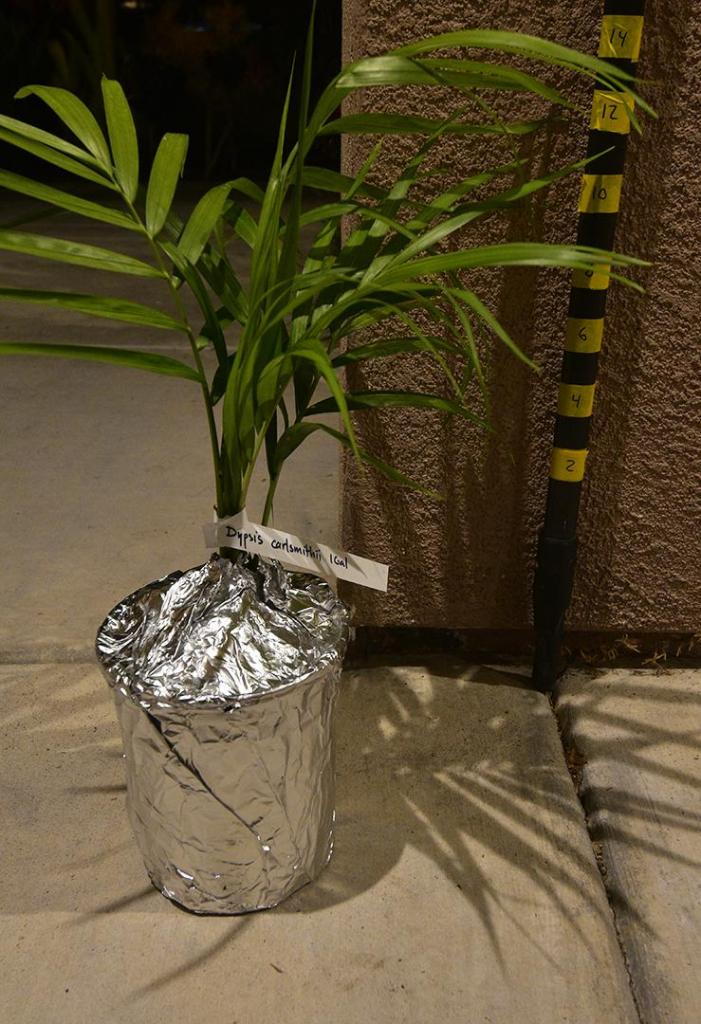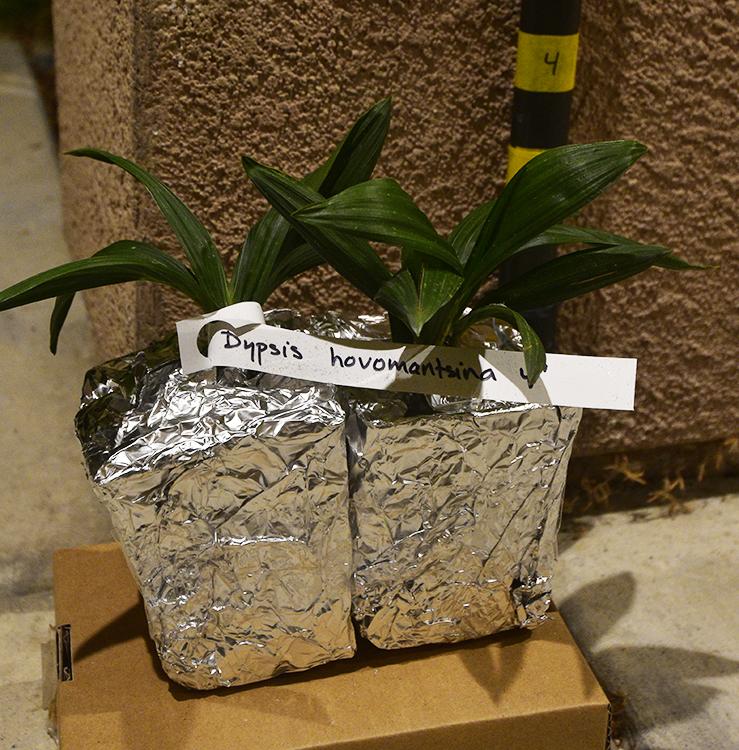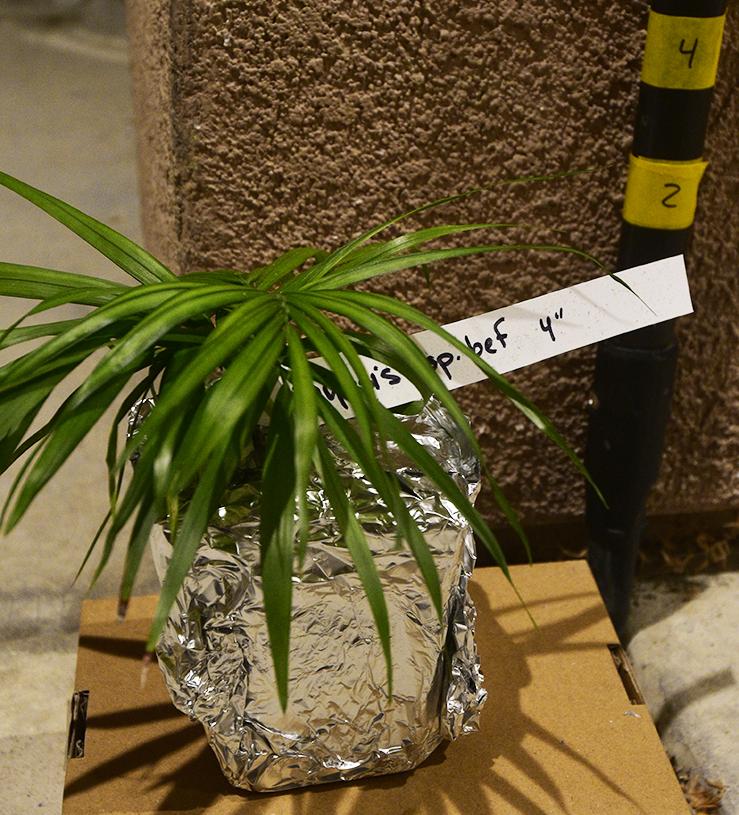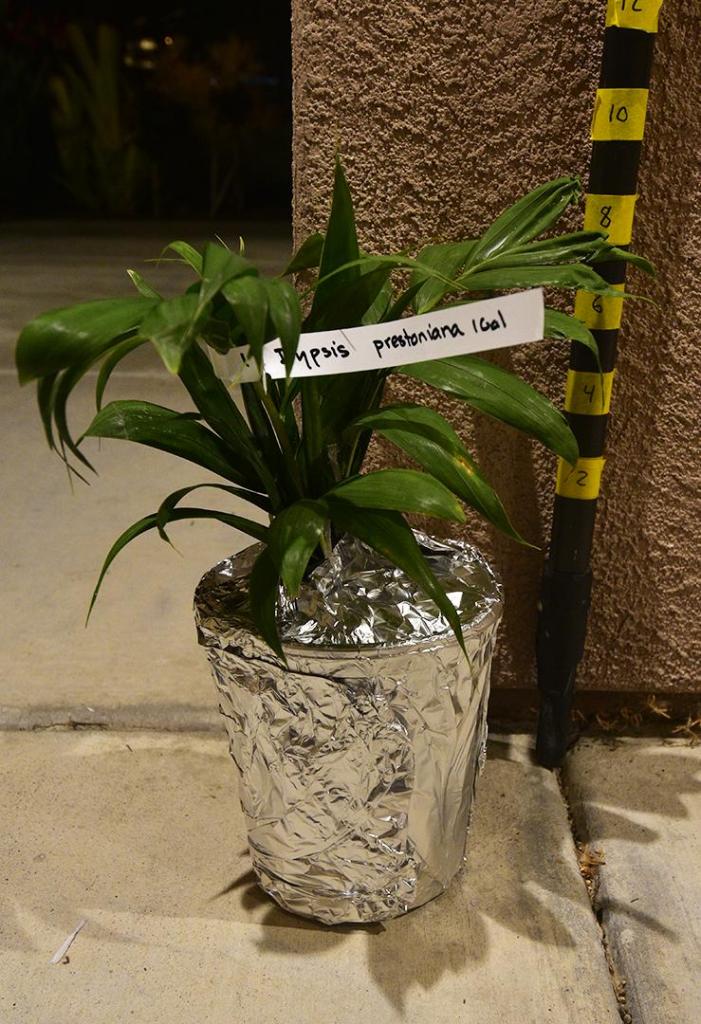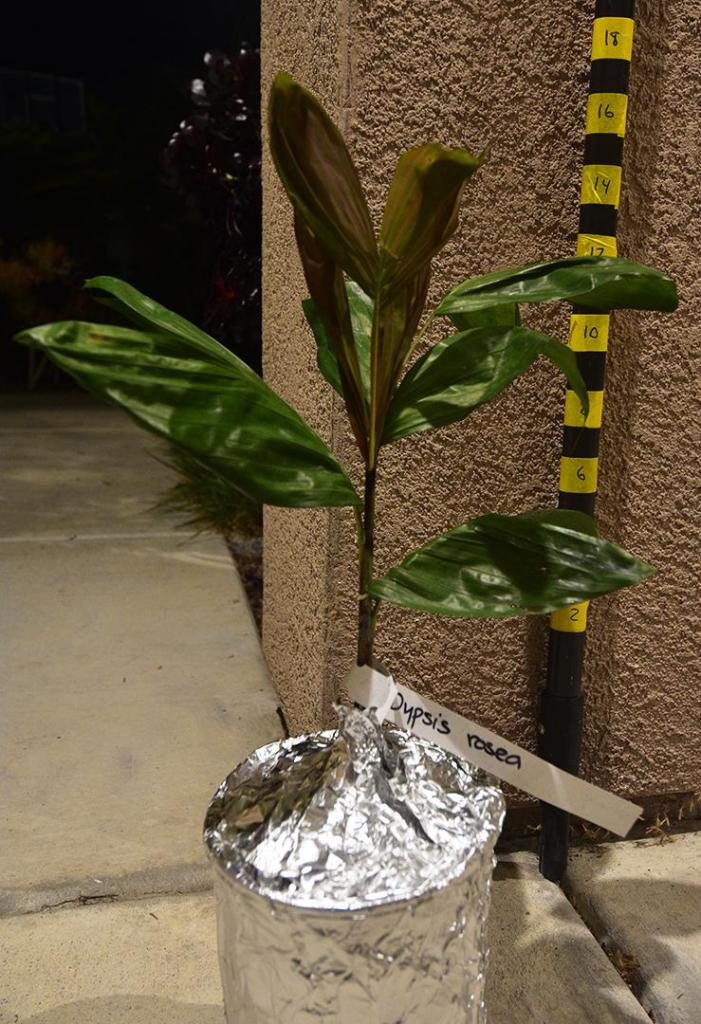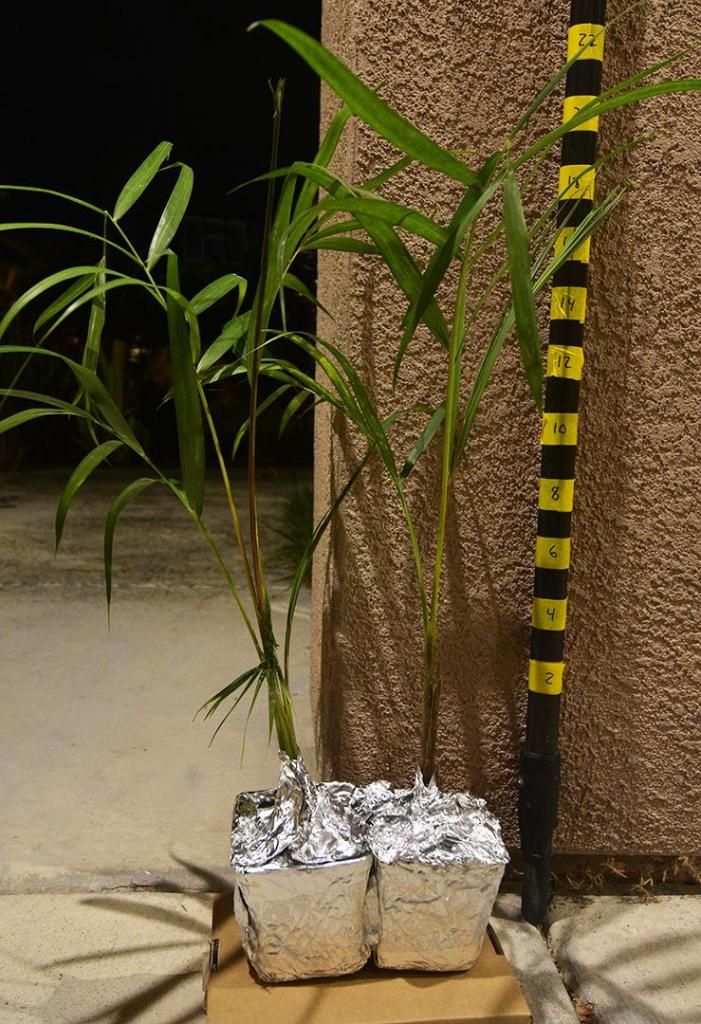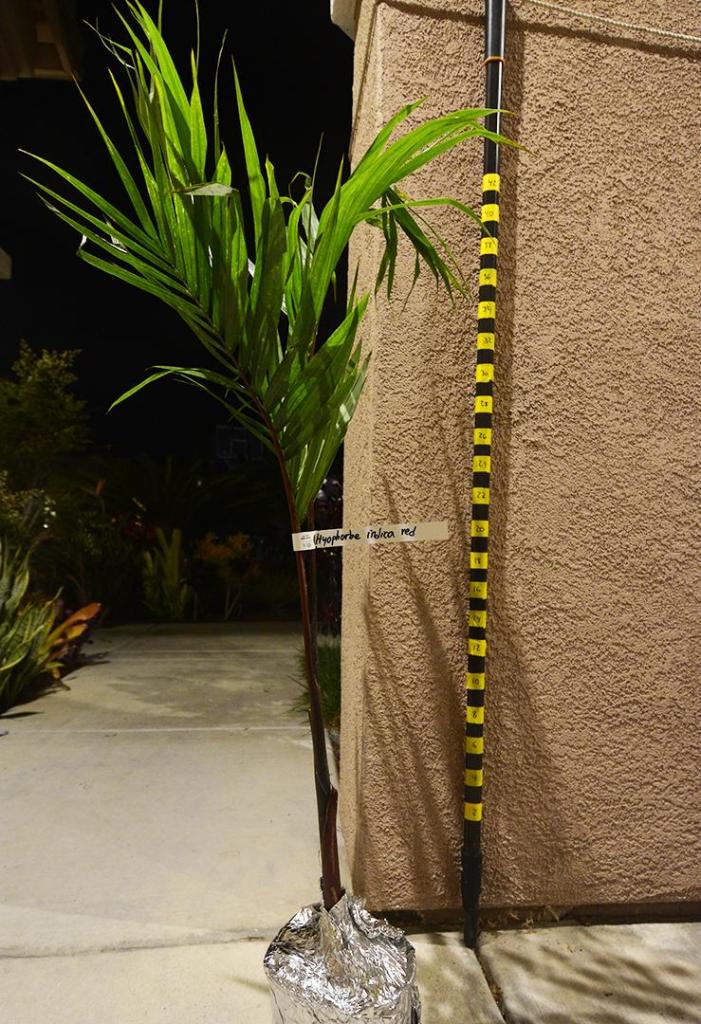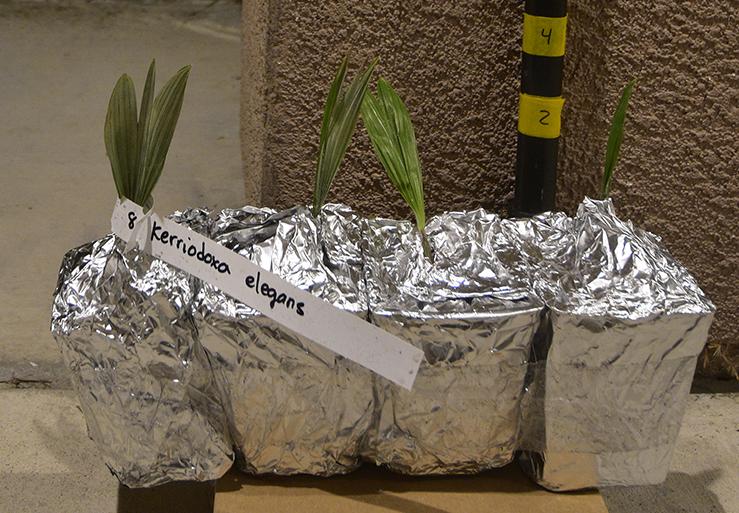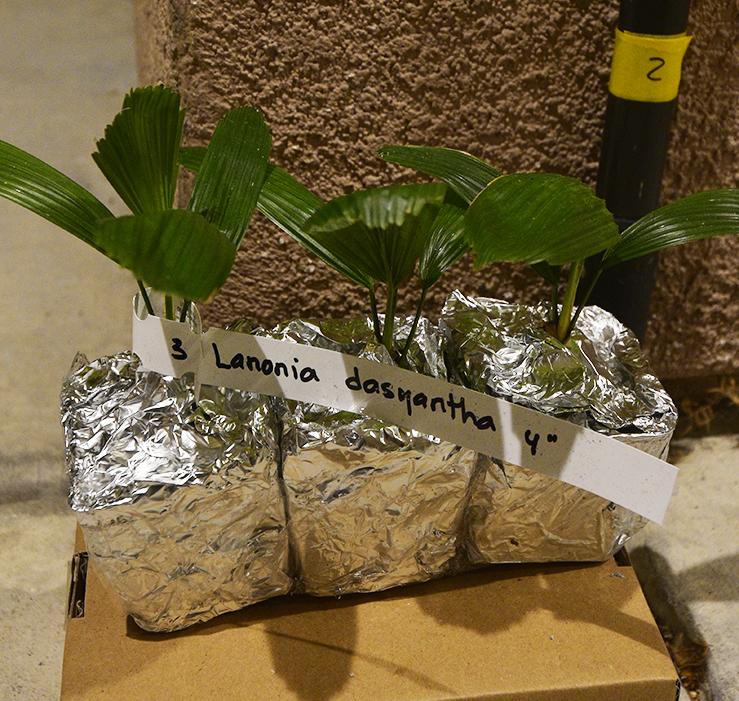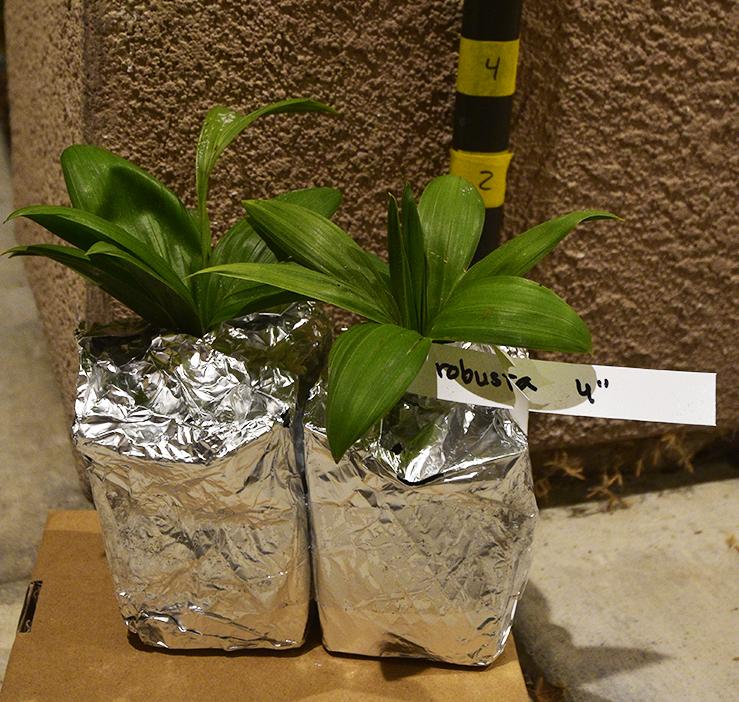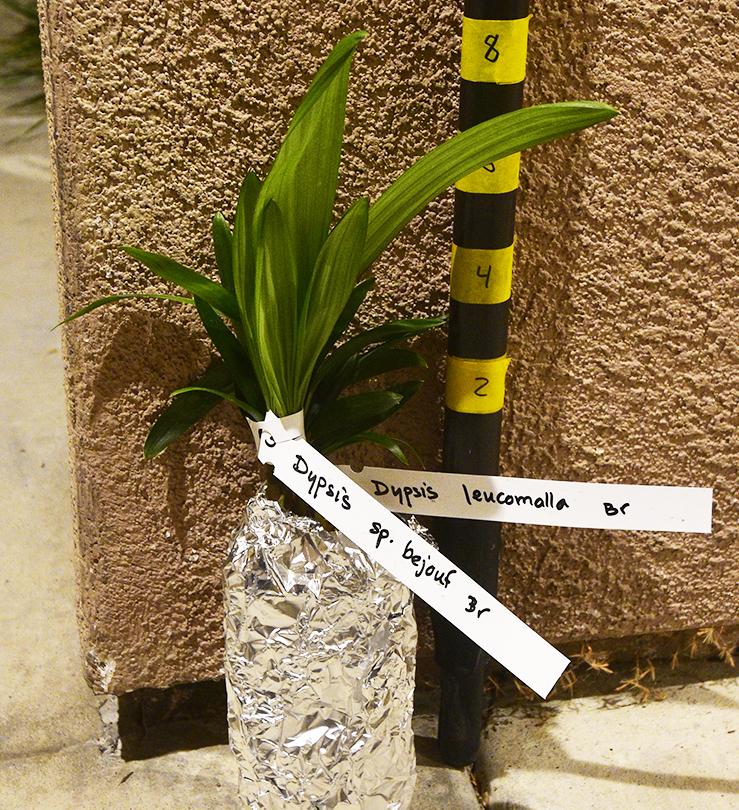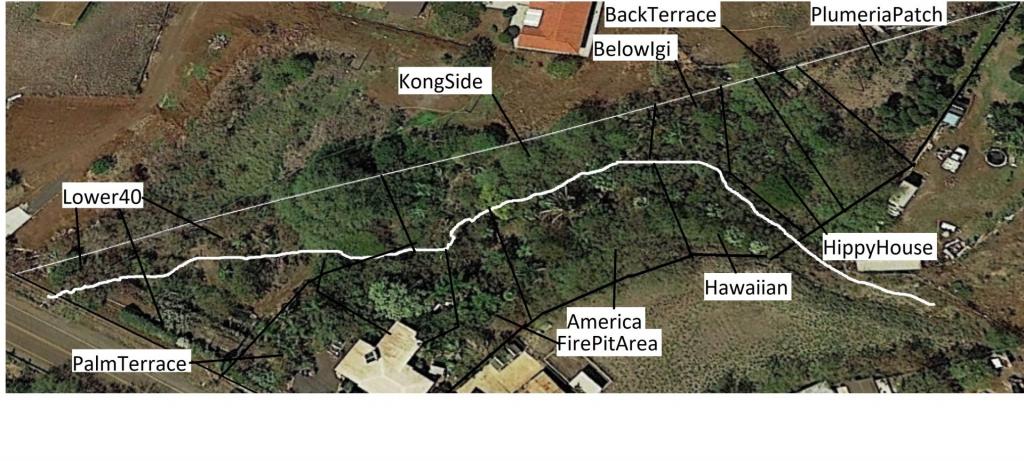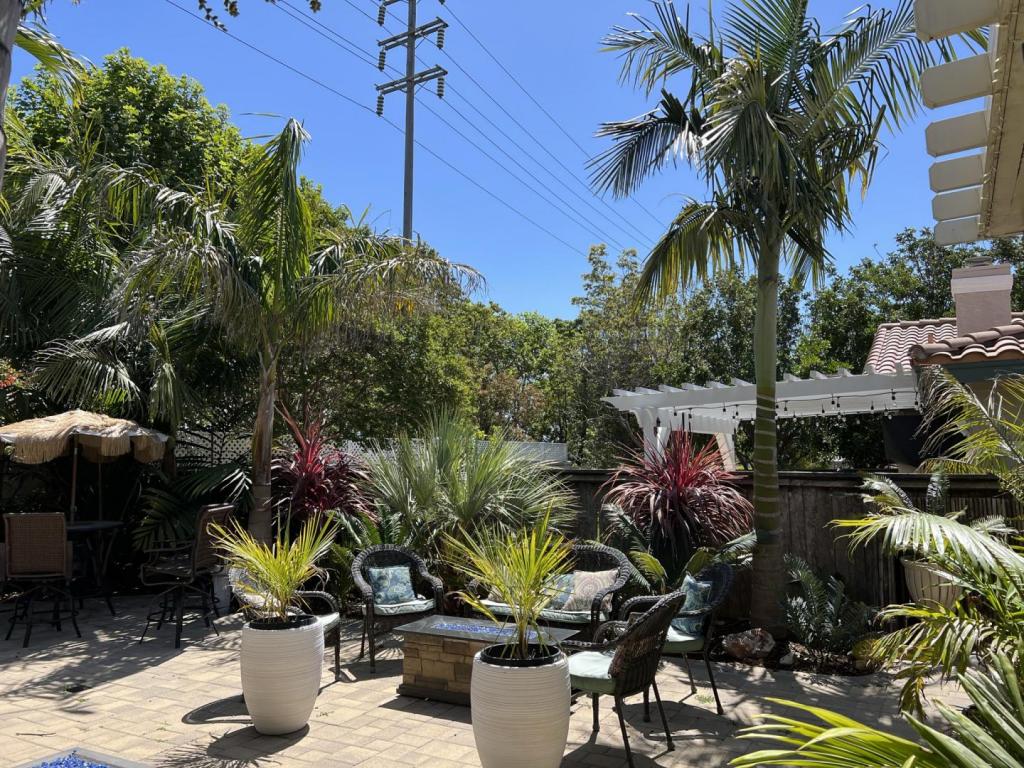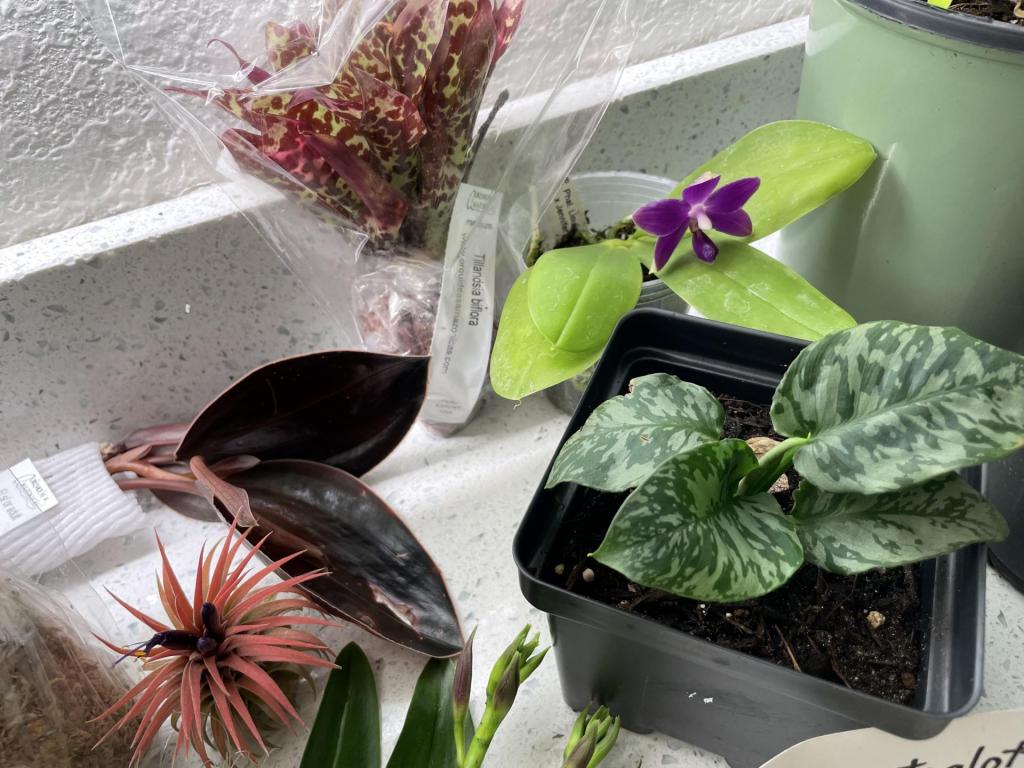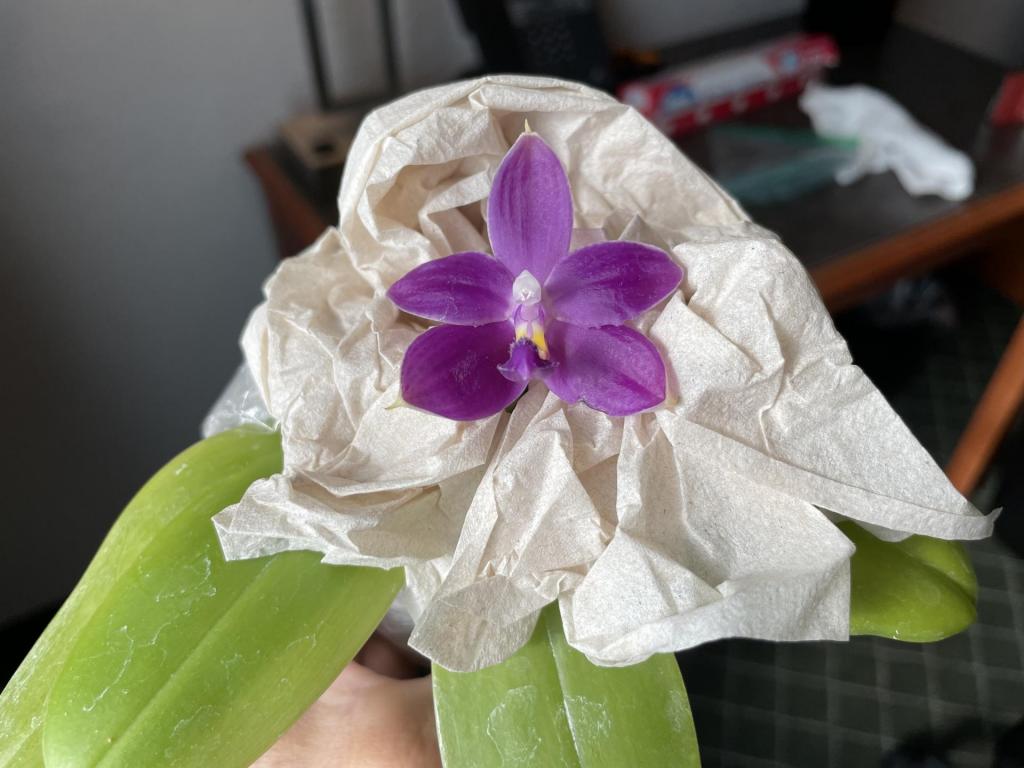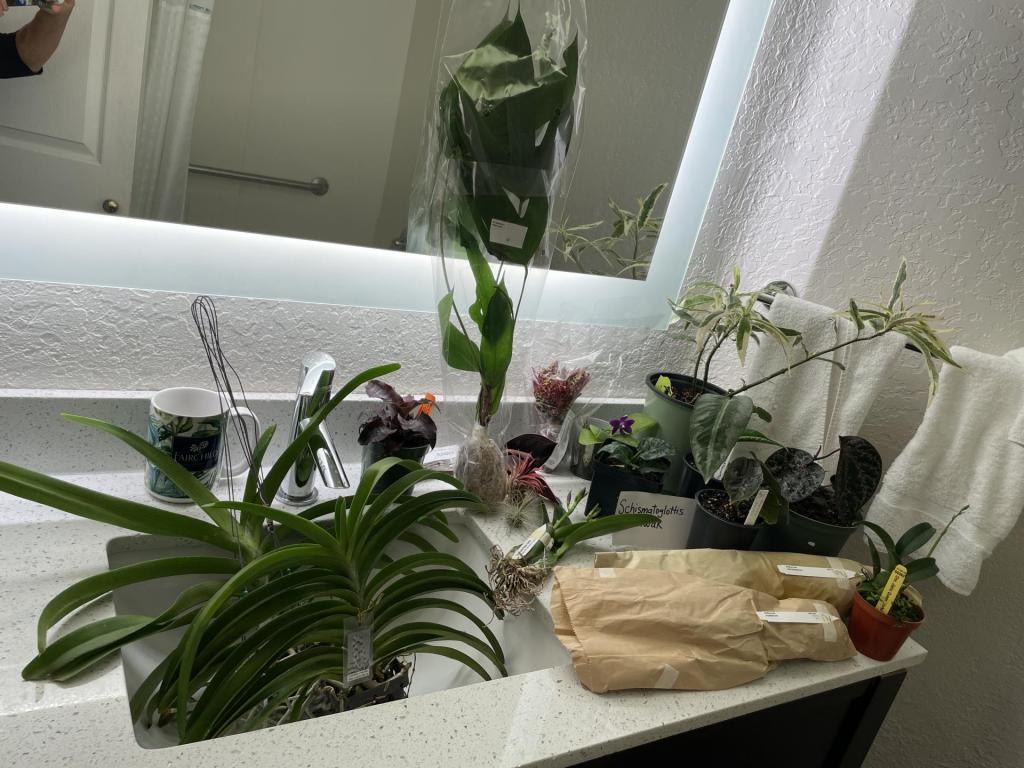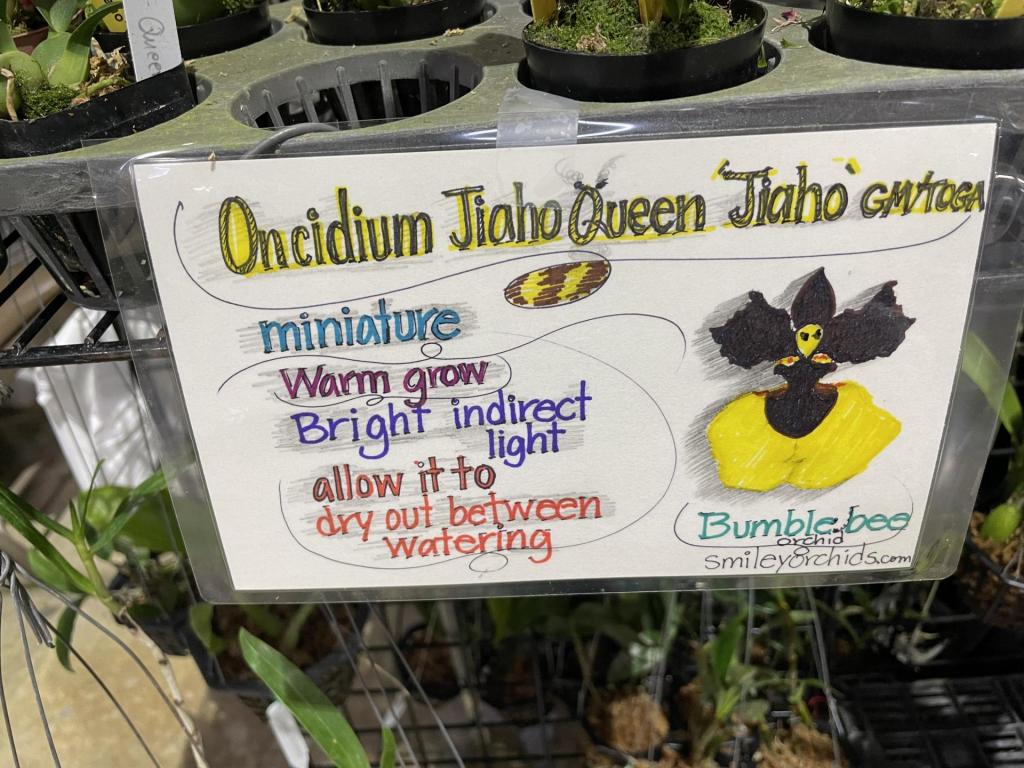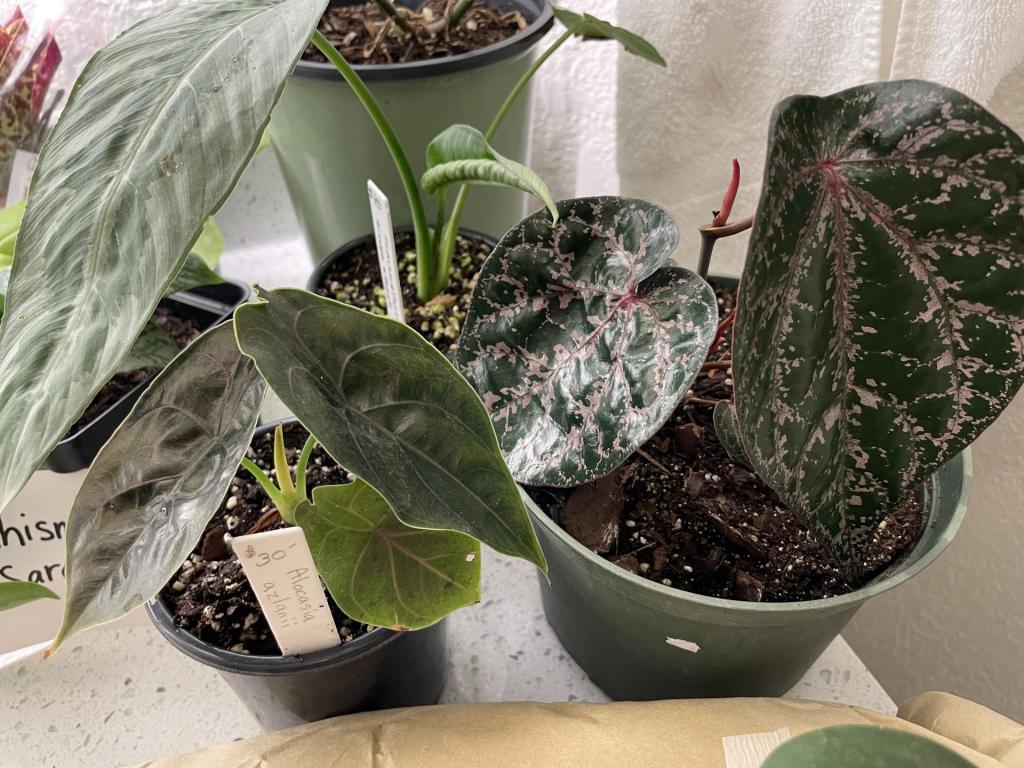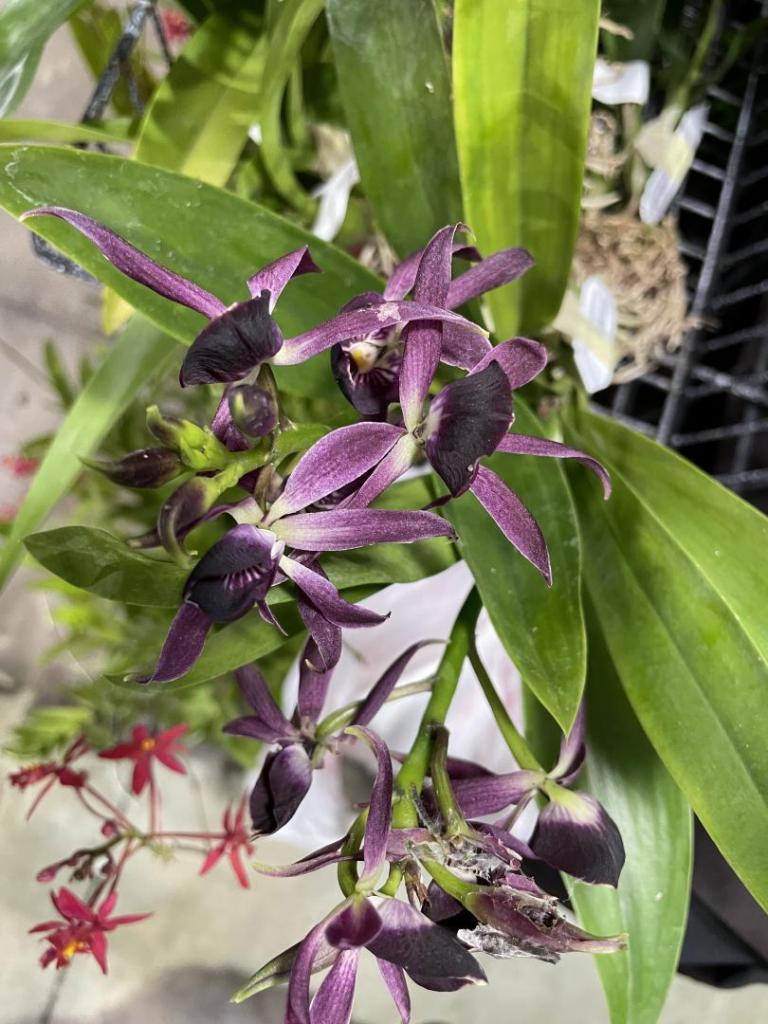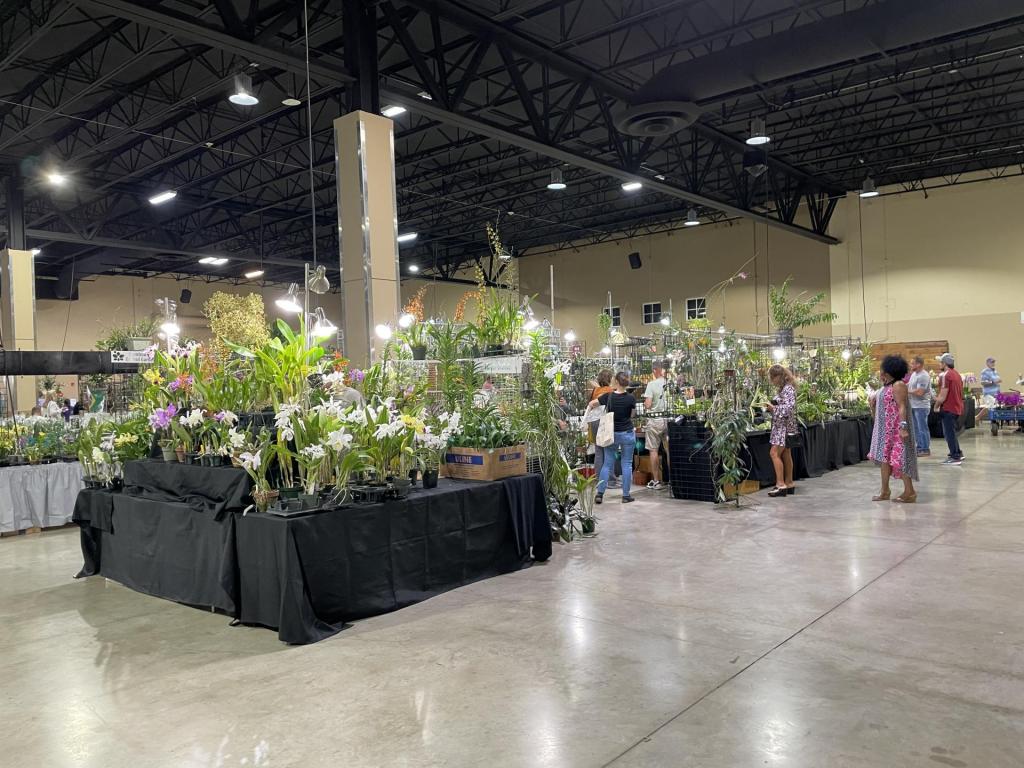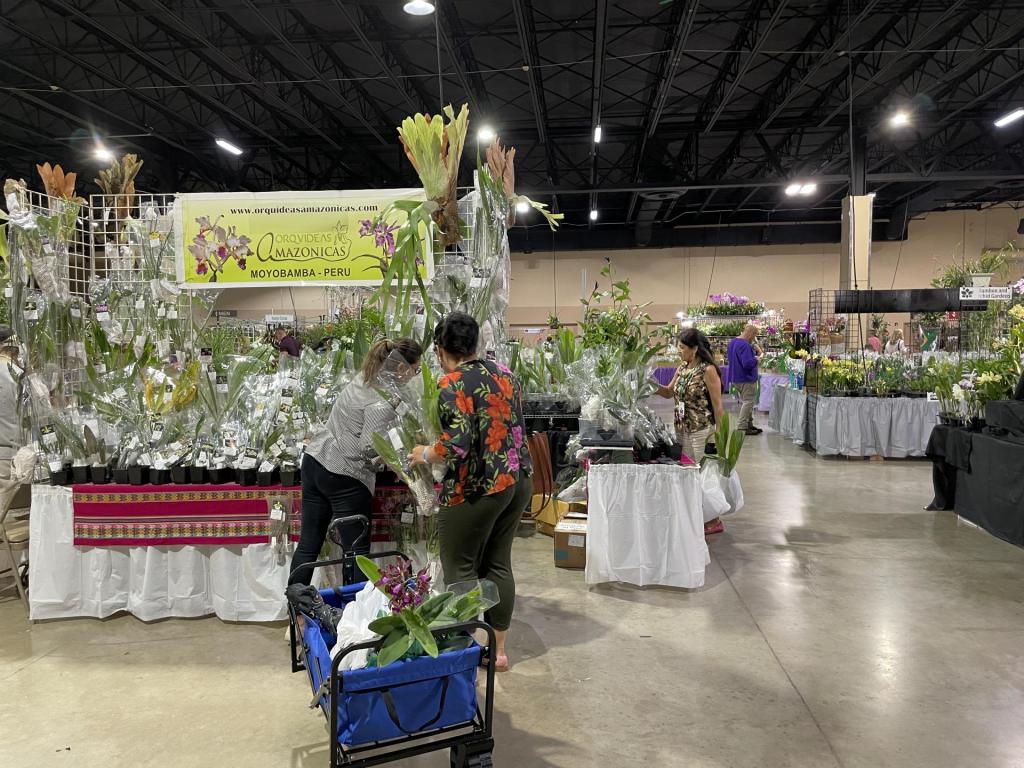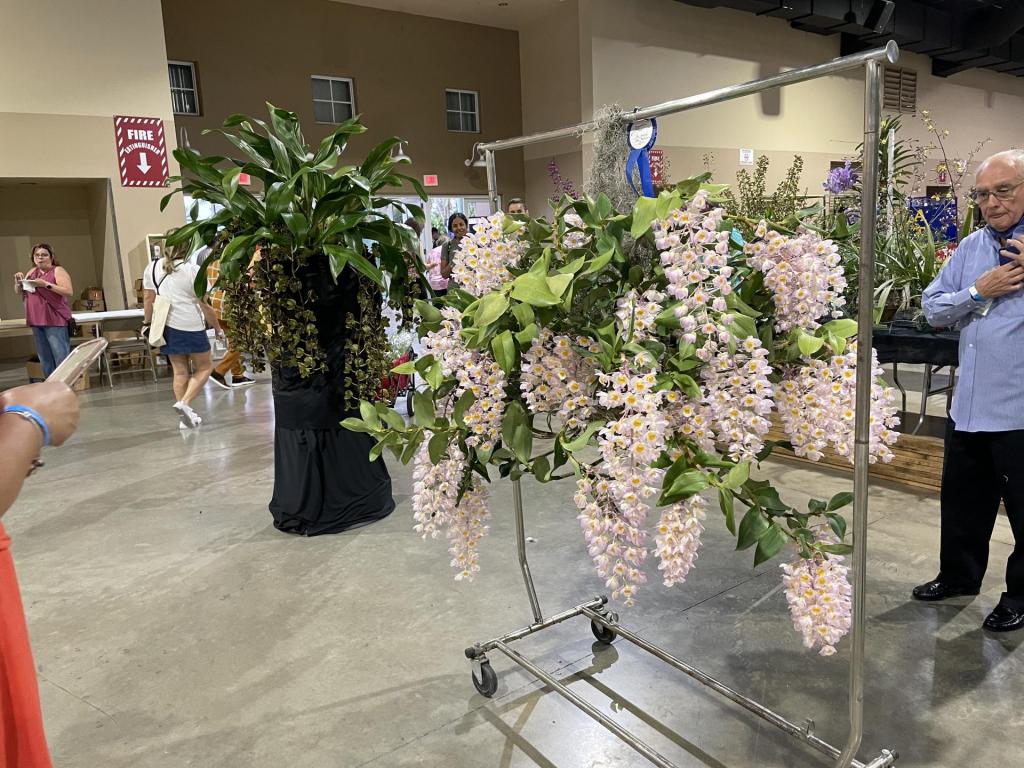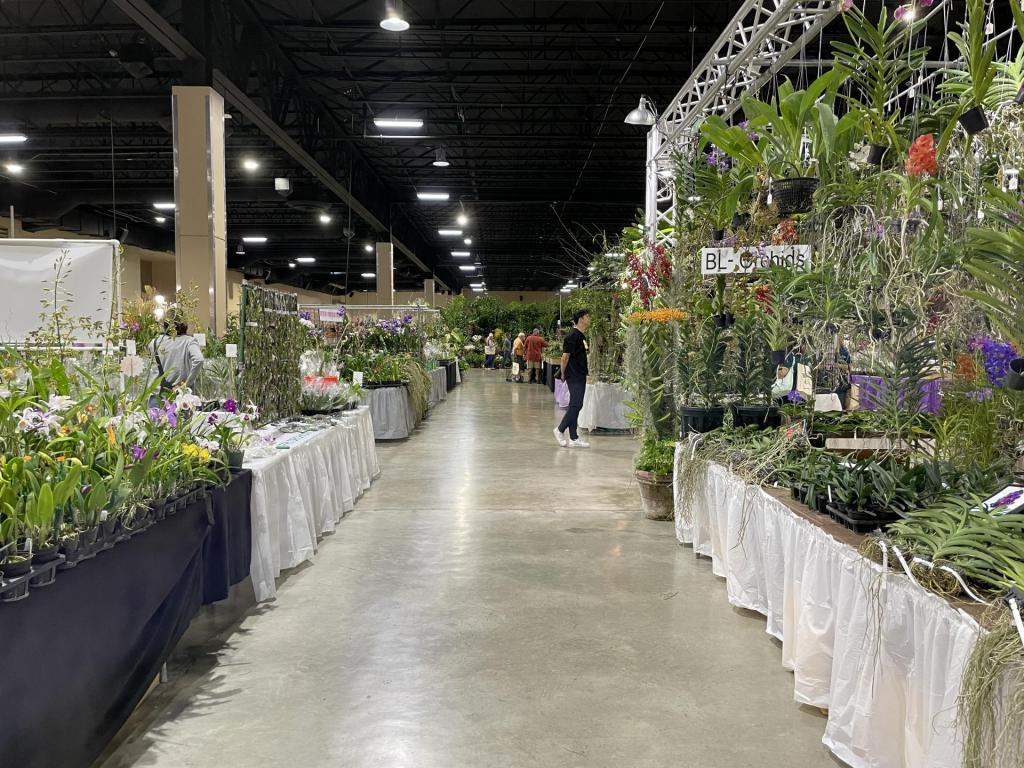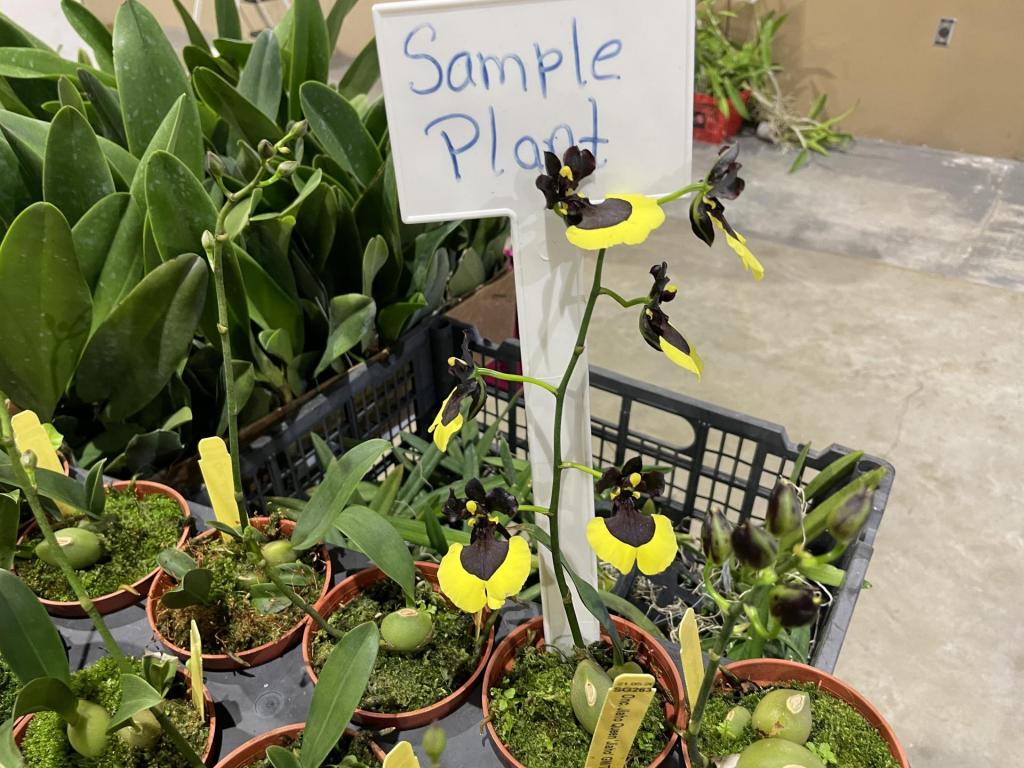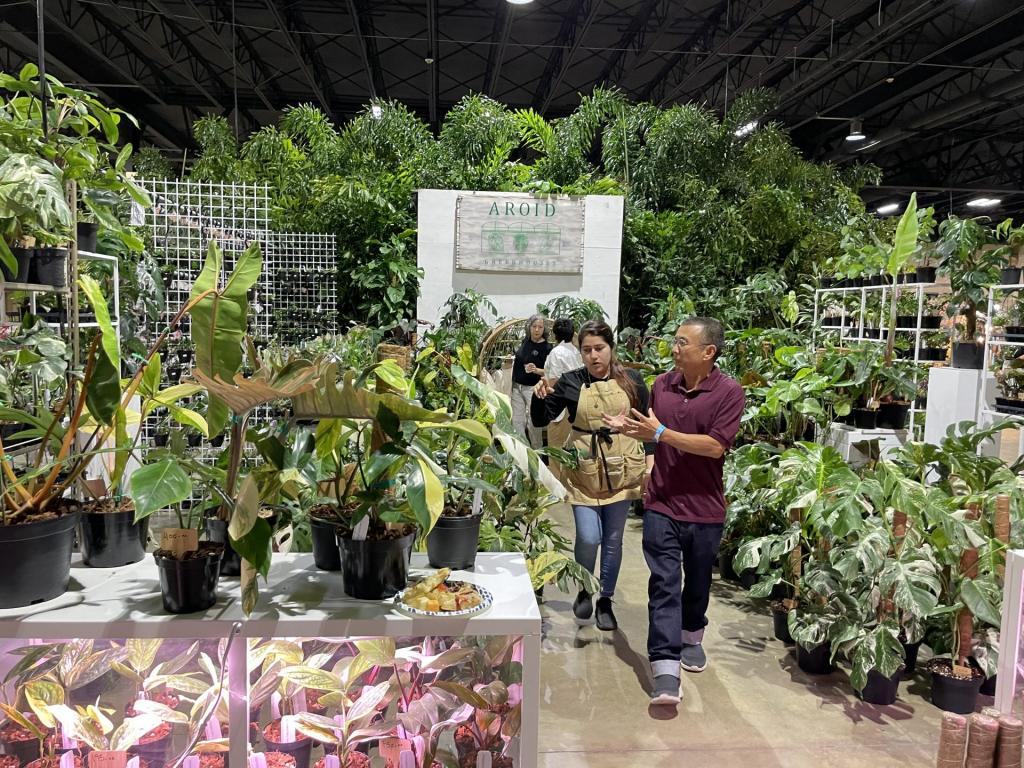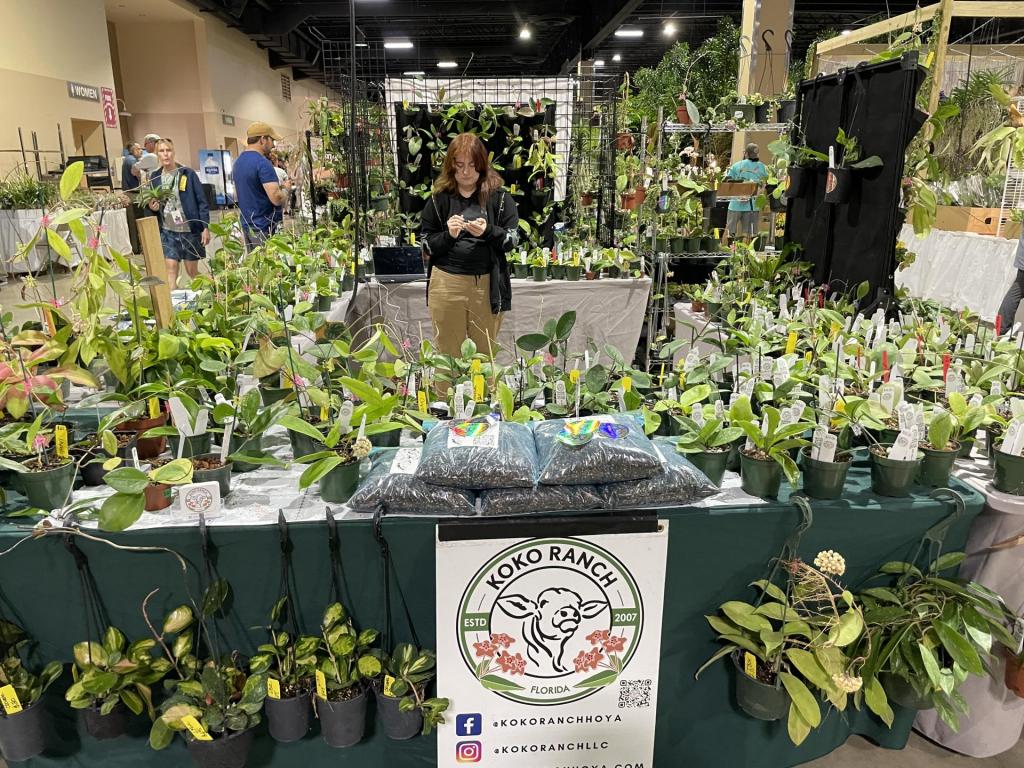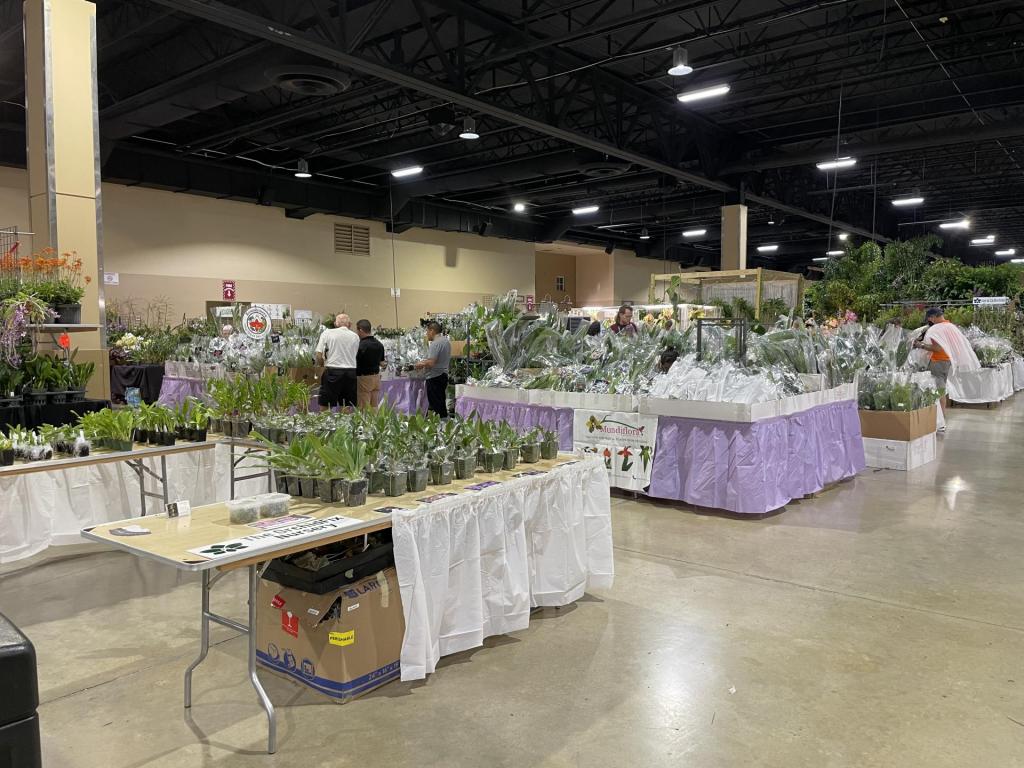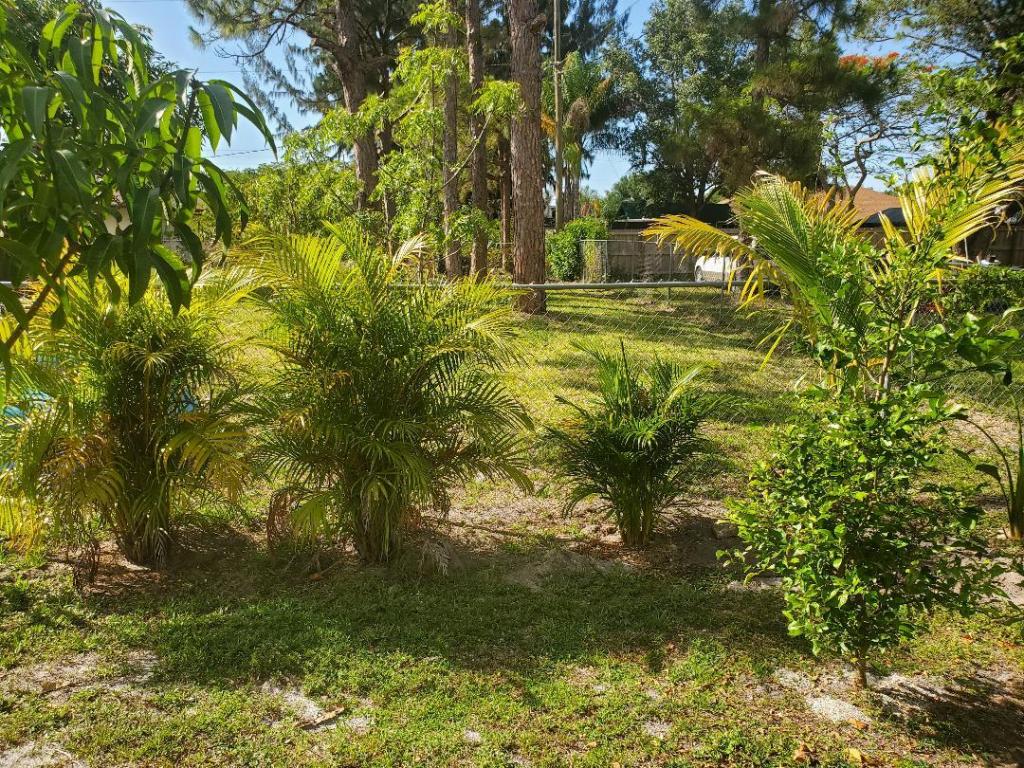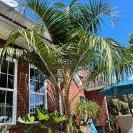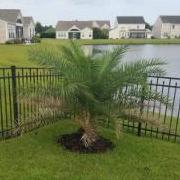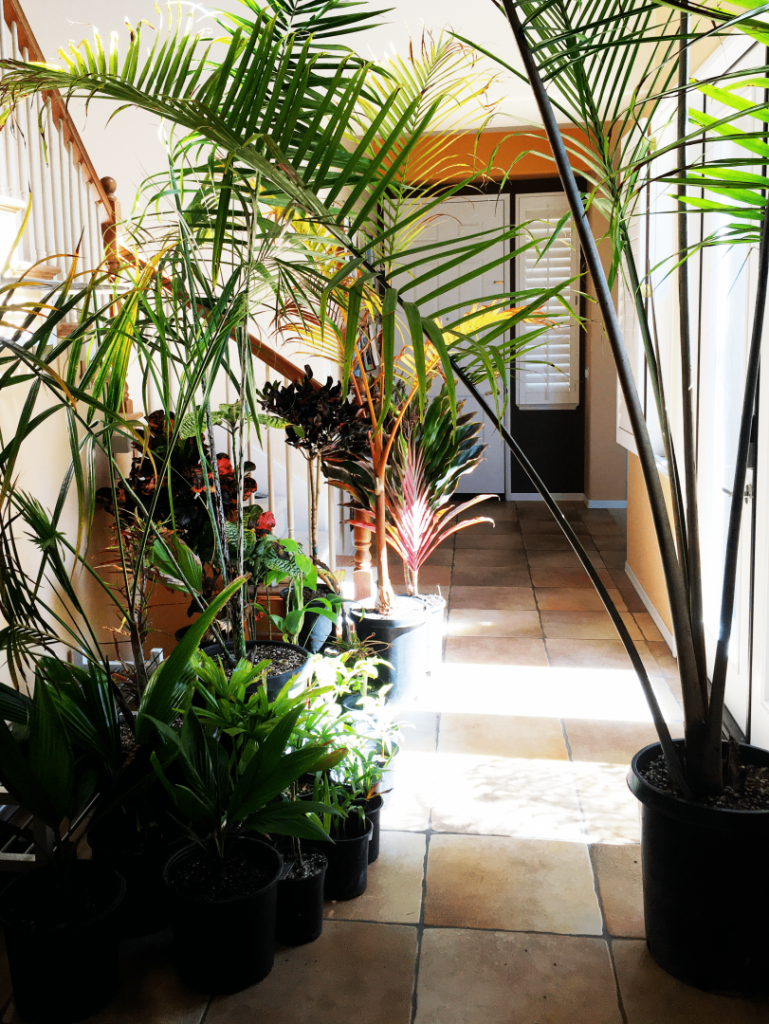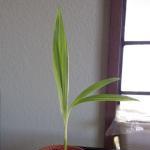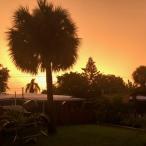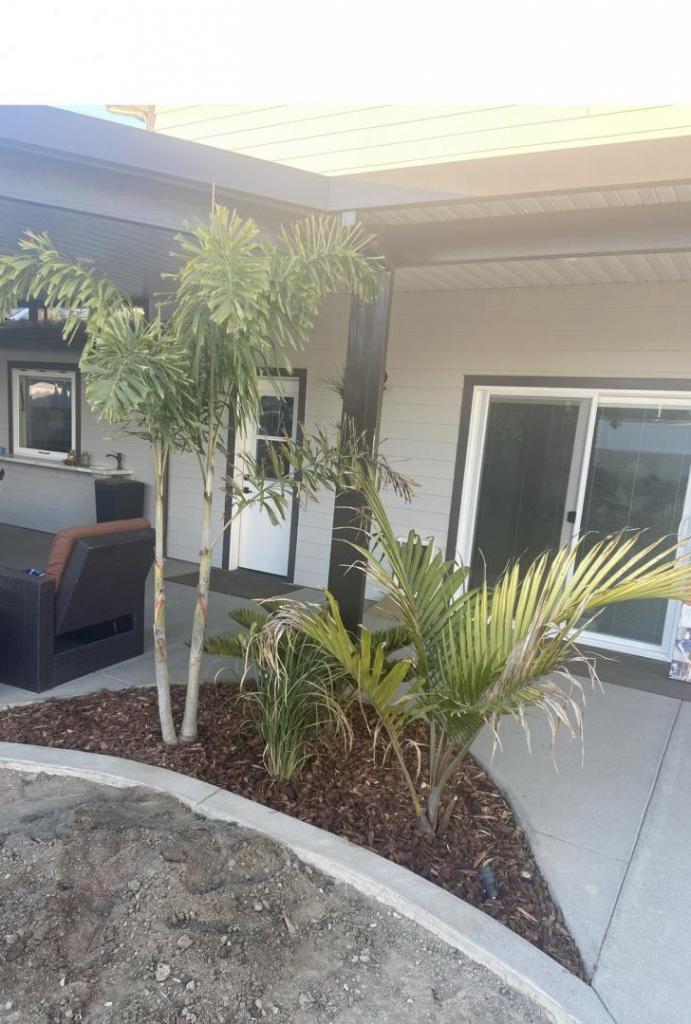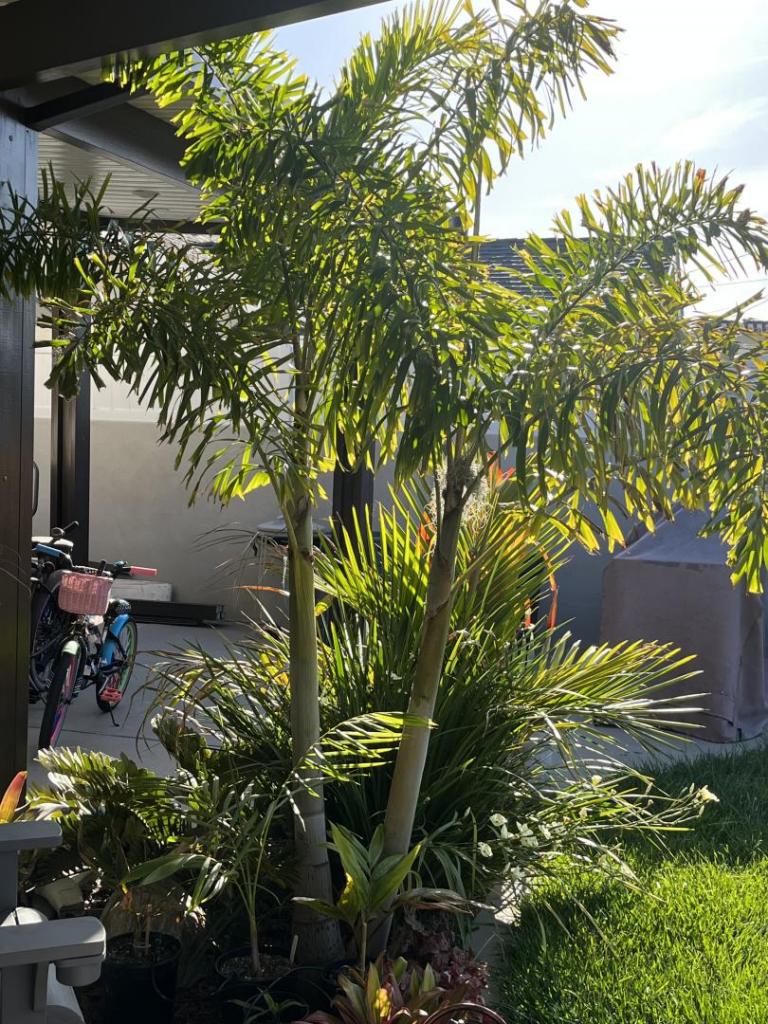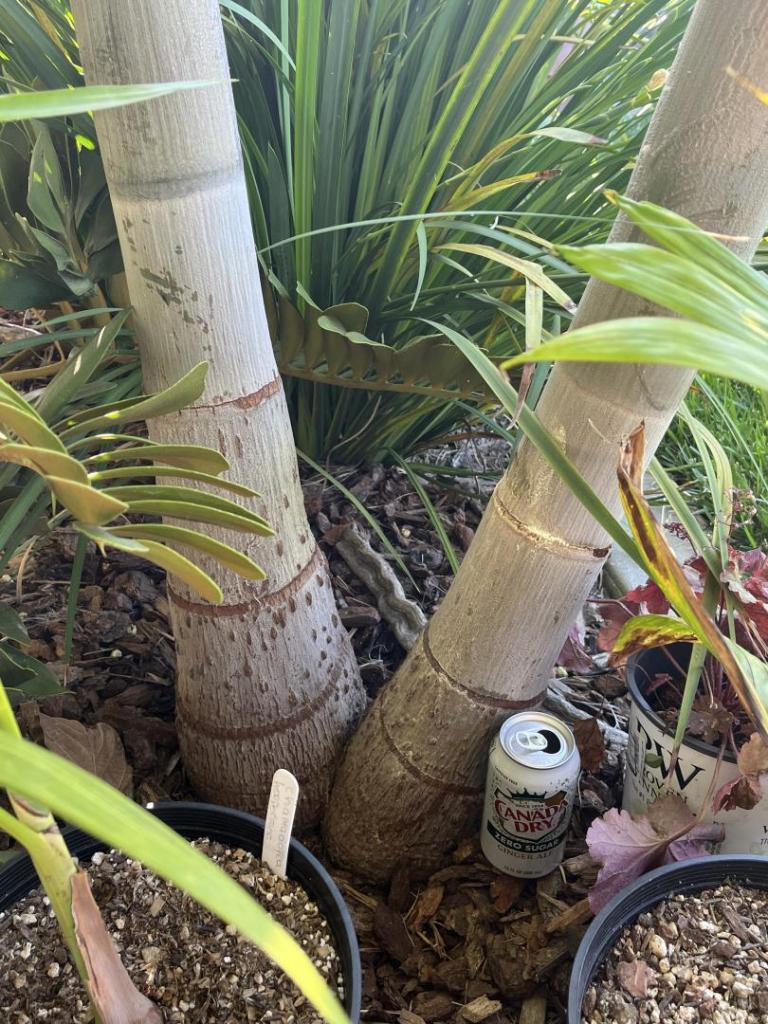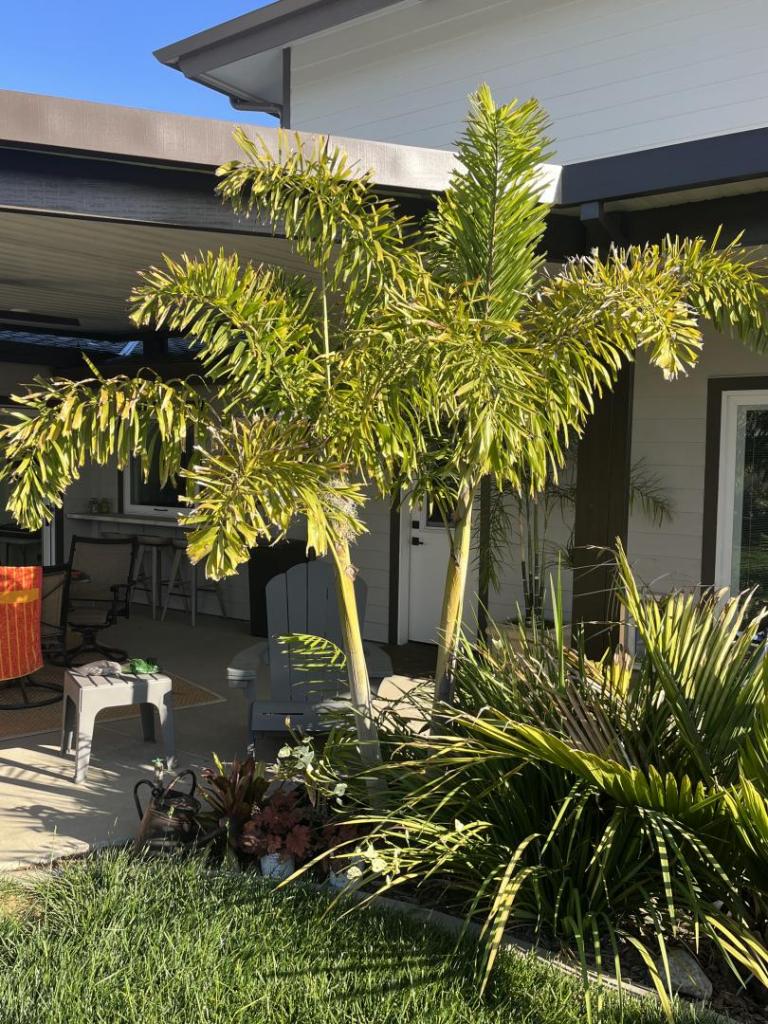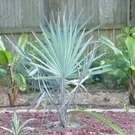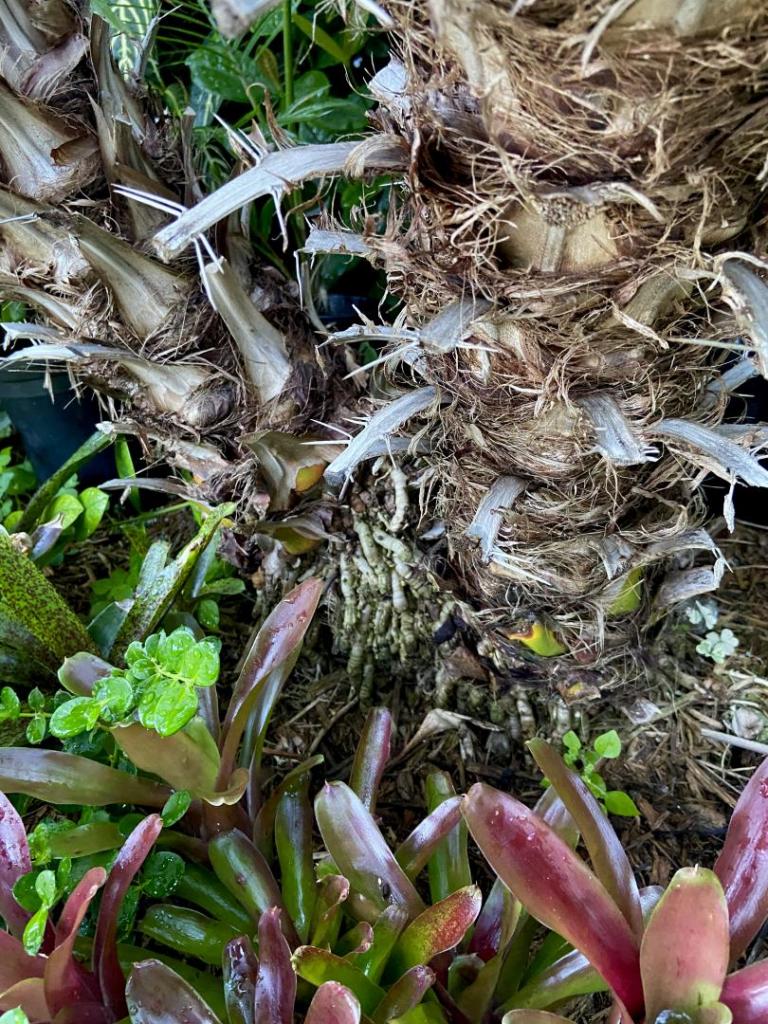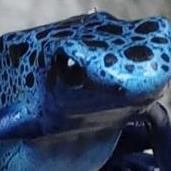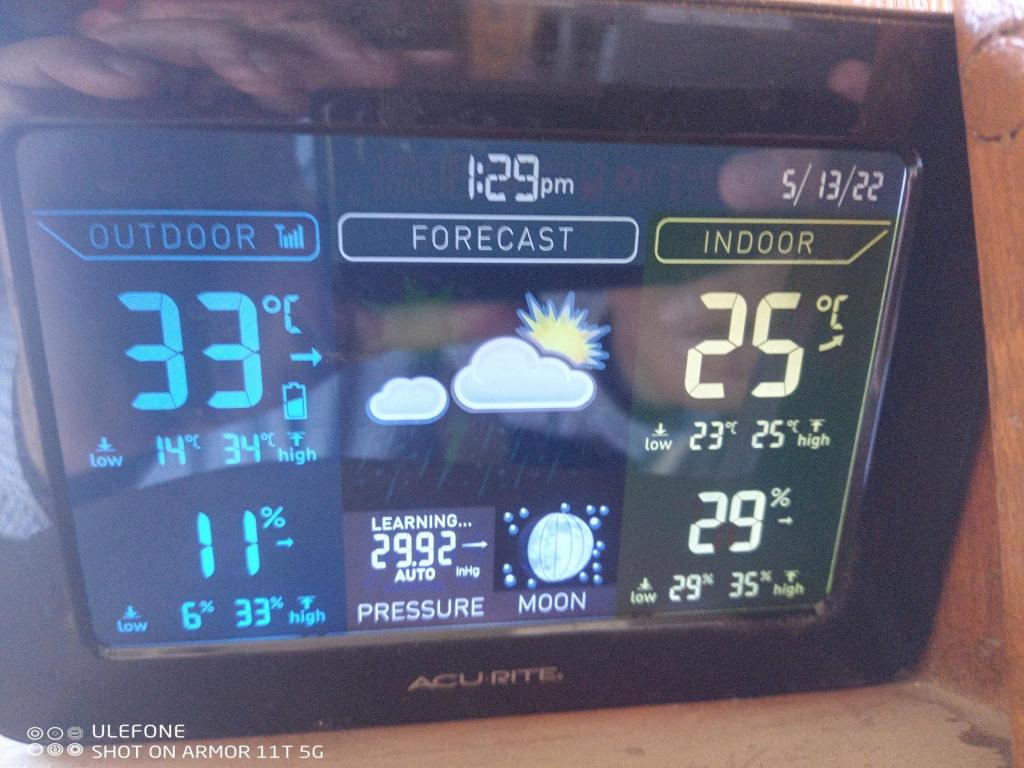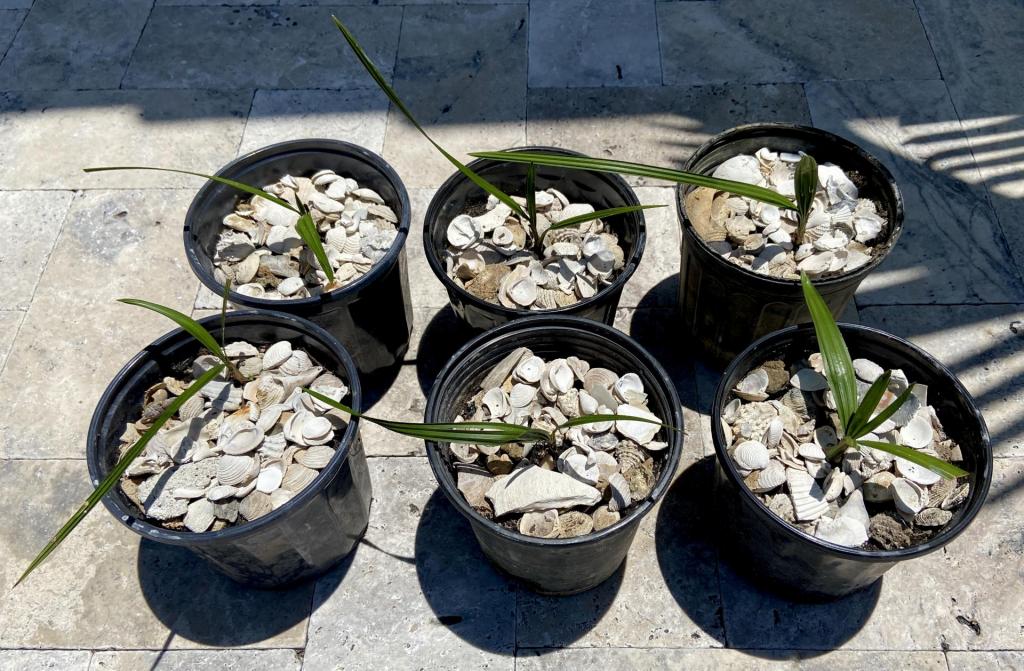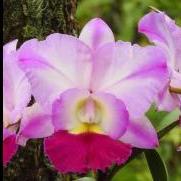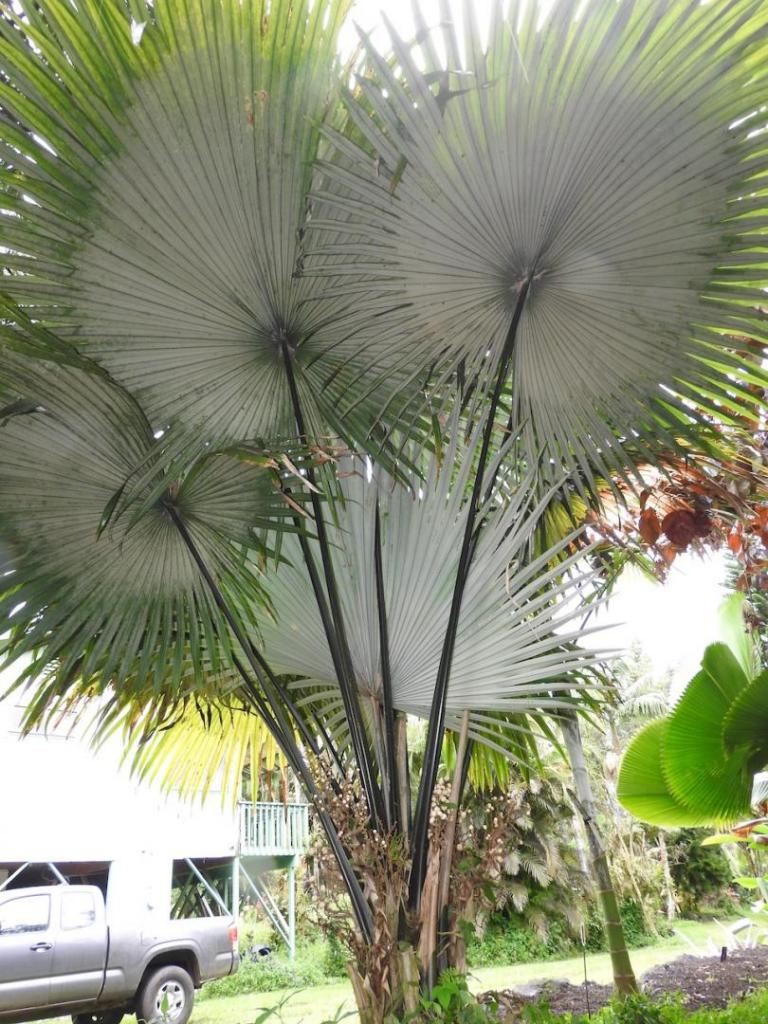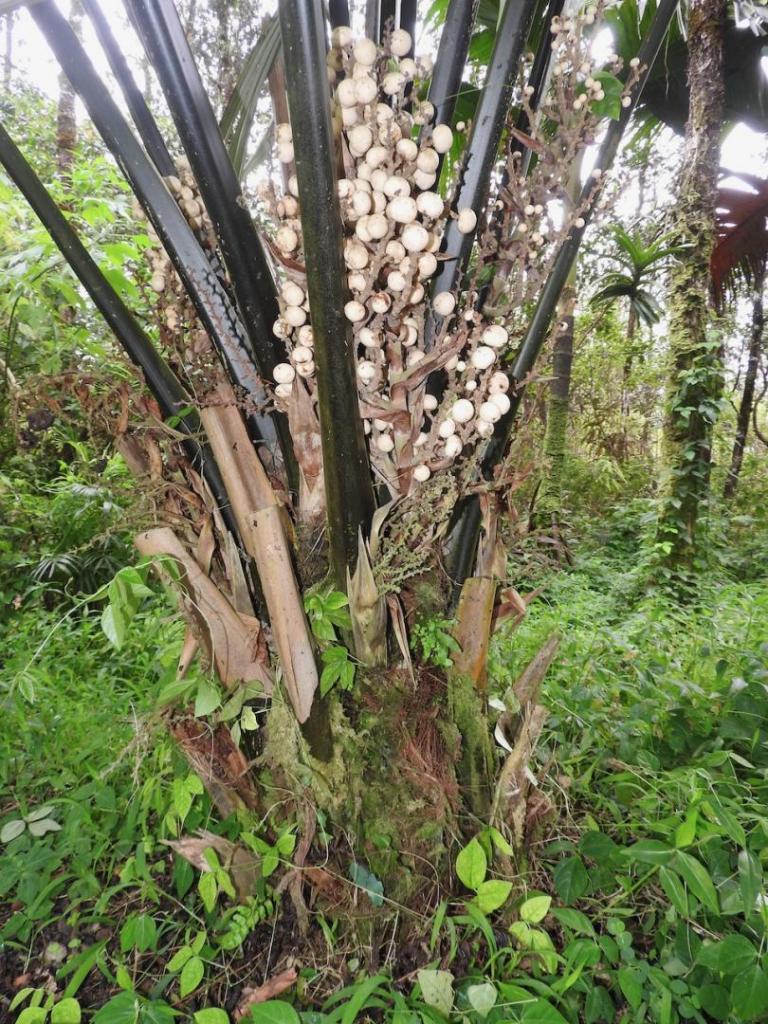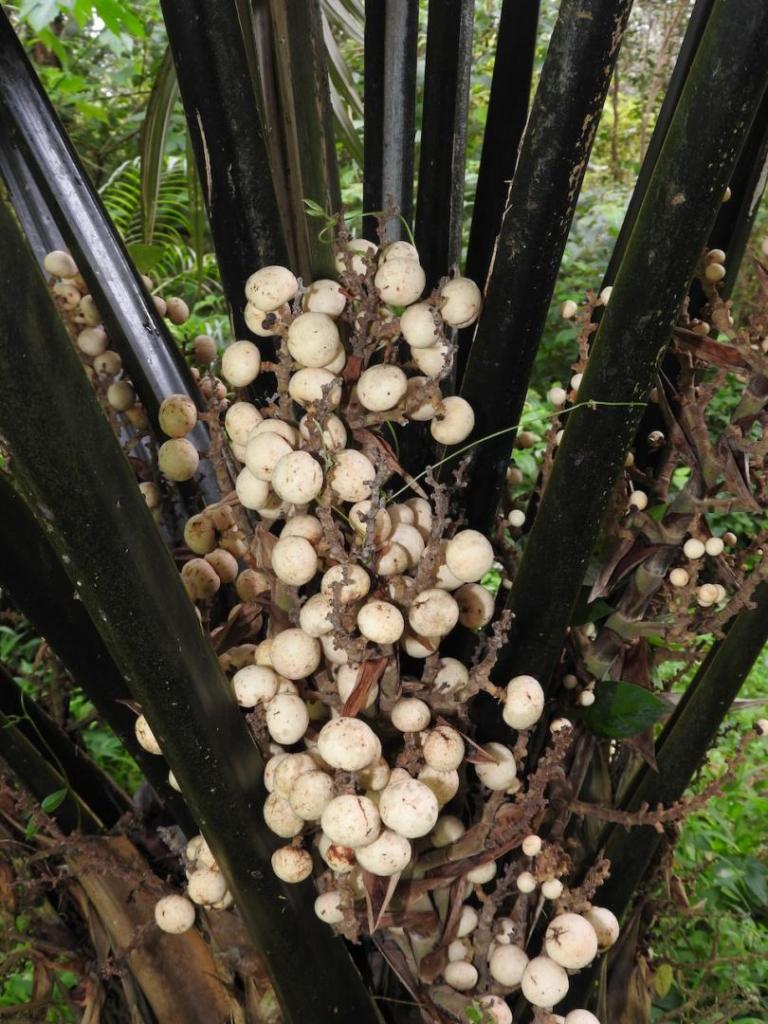Leaderboard
Popular Content
Showing content with the highest reputation on 05/14/2022 in all areas
-
Ok. Ok. Undoubtedly there has been a topic titled this before. Was I going to make the effort to look for it? No, but on this day, which was yesterday, a Thursday, I took these pics of my Archontophoenix purpurea. I thought it was looking nice and purple so I am sharing. Share your Archontophoenix purureas.18 points
-
My FloraBunda order should be here next week. Nine palms. Been working for two weeks to clear a 20 year old terrace that I've not taken care of for a while. The pictures are not exactly from same spot but you get the idea. Cleaning so far created one 8'bed F150 load and about 13 twenty gallon trash bags to the dump. Still have a bunch of scrub trees that grew into the terraces that I'll cut out tomorrow. I believe it's looking good, even if I have to say so myself. LOL That "ditch" in the foreground is some of my "dry" stream bed.6 points
-
5 points
-
I have had an unhealthy obsession with growing palms since 2007, and when I moved to the midwest in 2018 for job purposes to take a position in an emergency department up north, I had to leave all my babies that I had nurtured for years. To my utmost chagrin, the new owner in my former Fort Lauderdale home has now chopped down every single mature Areca, foxtail, Spindle, Royal, Veitchia, Carpentaria, Hyophorbe, Coconut, Phoenix Roebellini, Dictyosperma alba which was the extent of the collection I was able to accumulate at the small villa that I lived at back then. I spent years nurturing my babies and I was furious to drive past recently and see straight up lava rocks where palm oasis used to be. As an ER physician with a terrible work life balance and suffering from severe palm-tree withdrawal, I impulse purchased a house in June 2021 in south Florida for the sole purpose of planting my palms and other tropicals. My wife is furious about that decision to this day, but she understands just how much this means to me. I have accumulated a decently large collection of palms at the property at this point, but I will focus this post on the palms that were present when the house was purchased as well as the ones I planted immediately thereafter, to demonstrate the growth over the last 10 months with no supplemental irrigation, with no sprinkler system, these were purely grown on rainwater (with balanced palm fertilizer added 3 times over the last year). Below is the Queen palm that appears to be about as old as the house itself, maybe 30 years. First pic is July 2021, second pic May 2022 july 2021, and below, May 2022, was not expecting anything dramatic, honestly I think it's a poor choice for South FL but will keep it for now4 points
-
I went to my local Lowes today. I was astonished that I was able to purchase a group of large Phoenix Robellinii. The trunks are well-established and the fronds look in good health. I will keep them in isolation for 30 days in case of insect activity and / or diseases. I also purchased several bags of orchid potting mix for good drainage. Pictures posted below for your enjoyment. ;)4 points
-
4 points
-
4 points
-
Dustin, ask and you shall receive. This pic was taken April 12th of this year. It’s doing quite well. It does however get a black fungus/ tar looking substance on the backside of some of the leafs (not all) which causes it to drip a sap like substance from affected leaf. It doesn’t seem to slow it down or set it back though. I have thought about pouring a little hydrogen peroxide down into the growing point but just never got around to it.4 points
-
I've done this before (use fireball or other bromeliads to hide a less-than-ideal palm tree base). What's nice about bromeliads vs some other plants is that their root systems are almost non-existent, so not gonna compete with the palm's roots for space. I agree the ideal would be to either plant it deeper or mound up to cover the exposed roots, though that would be a pretty high mound... maybe bring up the whole planter as high as you feel comfortable, mound the soil extra high right near the roots, and cover with bromeliads if it looks strange. Or leave it as-is... they're pretty tough plants.4 points
-
I know it's been hot in Texas and even the Midwest but here there has been a pesky Low pressure system off the Southeast coast that's been hanging around for the better part of the week . Well that Low is moving on and I'm going to get in on some summer like weather . Sabals love 80'sF-90'sF with lows in the 60's . Sabal Birmingham on the left and Palmetto on the right . My HC palmetto might bloom this summer but it should next summer . Hopefully I will have a lot of seed on my Birmingham that has been lacking a lot of seed for 3 years now for some reason . ( Possibly it needed to recover fully from 2018 when I had a record eight day below 32F period ? It has fully recovered so we'll see how many inflorescences it gets . Hopefully at least 3 that are full of seed ) I'll keep everyone updated on the Birmingham and this year's seed production . Will3 points
-
Anthurium pseudospectabile (4"): Not a palm, but we were very happy with last year's group, so ordered 2 more. Surprisingly the new ones are as large as the now 1-year old ones. Areca vestaria (1g); I know!!! (covers ears)... But I saw photos of a living one in SoCal in the forum, and just have to try. This plus the red version are the "zone pushing" experiments for this order. Areca vestaria "red" (1g); Most likely to be buried next to the other Areca. Dypsis sp "Bef" (4"): Dypsis sp "Bejouf" (seedling) + Dypsis leucomalla (seedling): Dypsis carlsmithii (1g): Dypsis hovomantsina (4"): Dypsis mananjarensis (seedlings): Dypsis prestoniana (1g): Dypsis robusta (4"): Dypsis rosea (1g): Dypsis sp "Orange Crush" (4"): Dypsis sp "Maroantsetra" (4"): Hyophorbe indica "red" (1g): Kerriodoxa elegans (seedling): Lanonia dasyantha (4"): Enjoy!!! * If quoting, please include just the plant you're commenting on (if possible). Hoping to use this thread to track my Floribunda babies' growth over the next couple years, while possibly helping a fellow palm collector. My collection is particularly Dypsis-heavy (obviously my favorite genus).3 points
-
Not sure if I told this story before, but here is how we bought the 2 acres. The guy that owned it lost his wife. His new wife had a house on the other side of the island which is much "greener" than Wai`anae and probably not as far from "civilization" (in 1974) as her home. She did not want to live here. Perhaps also did not want to live in "that other women's home". The house was on the market for way over a year. Not level enough for a farmer to buy so it sat there. We made a offer of $72,000 and he took it. So here we are living in PARADISE. Our old home was on the main highway through Wai`anae town and was quite, sort of quite. Then the State added two more lanes to the road and someone build a mall across the street and BOOM it got really noisy all day and night w/the traffic. I wish Google Earth would update their photo. I'd like to see what it looks like now. I'm too cheap to buy a drone. LOL I think this is a 2013 Google Earth photo. The wavy white line is the dry stream bed.3 points
-
I’m really not too sure. Perhaps the parent plant is just a very robust maxima. I believe that Phil feels it is truly different from a standard maxima. Yes, I’ve got two that size that are in 15 gallon pots sitting inside the decorative pots as seen below. I also have two much larger ones in the ground. These ones will probably one day be sold. Who knows?3 points
-
I did get a few orchids (couldn’t resist two beauties from Motes) but selected ones not in bloom so nothing really to see in a post. I got one of the cute “Bumble bee” orchids with the yellow and black blooms in the photo above. Mine has small buds that I packed to try to save for the flight. Plus a nice deep purple phal and the other purple hybrid in the photo (again mine is in bud, not bloom). The Motes orchids are pictured in my sink along with some small ornamentals that should be groundcovers for me. I also got a pretty Tillandsia bicolor from Ecuador with very dark spots and a bunch of cheap Tropiflora Tillandsias (at $1-$2 each) to glue to styrofoam balls and hang from trees and give as gifts. I have had good luck with these and zero care needed. If you live in FL head to the Tamiami show!3 points
-
I attended only the preview event and they even let me enter before the listed start time of 6 pm. As you can see from the photos it was not crowded! It did get a little more crowded by the time I left but never waited in a line to pay and (masked by choice) I felt pretty safe. I bypassed the food and drinks until I was ready to leave. I had to wait for a few vendors to return with their food (or buying from others I expect) to pay but just tucked my selections aside so someone else wouldn’t grab them first. Bare rooted everything and no airport issues. PR is US.3 points
-
Backyard is full of random tropicals I put in to develop a green privacy screen. I'll include just two of the areca palms I planted last year and their progress. As you can see they were well below the fence line, now they are about a foot over the fence. Ignore the little guy on the right I put him in 2 weeks ago below3 points
-
You could try to put a rock border around it and raise the dirt 1-1.5 feet to make a raised bed of sorts.3 points
-
@Susanmarie8 Welcome to the forum. It is a fantastic place for information. You could add dirt or leave it alone. It won’t matter much. The best care would be regular watering and fertilizer, and don’t over-prune. The most common mistake with these is over pruning. Only the oldest, brown, dead fronds should be cut. Too many people trim these palms to only leave the upright fronds which actually weakens the plant. Your palms look good but would probably benefit from a palm specific fertilizer and increased watering. Adding some mulch would probably help too since these palms prefer more moist conditions.3 points
-
Welcome to the forum! Yes those roots should be covered, all the way up to the base of the trunk. You could dig the whole thing out and plant it deeper or mound up a bunch of dirt around it to cover it up to that height, which is essentially I think what you are suggesting with building a pot around it. For whatever reason it seems to be common to plant palms with tons of their roots above grade, I don't know why, and they may live many years like that, but I certainly think they look better and do better with the root buried. And you are correct on the id, it's a pygmy date palm, Phoenix roebelenii.3 points
-
So I've decided that each week, on every Friday, I'll post pictures of my Washingtonia filibusta seedlings. Just so I can document and share the growth of these palms. I already posted a picture of them a little over a week ago, but now the pictures can officially start. The second and third picture are of the ones that seem to be growing the best, this could change and is one of the reasons why I want to document their growth.2 points
-
Most likely. I had one come back up from nothing but a little white nub at the bottom.2 points
-
2 points
-
As I read the beginning of this thread, I was thinking…. “What’s missing is some of the big Dypsis.” Then as I got to the end I was thinking…. “Not anymore”. My vestiarias fried last year with just a little morning Florida sun, so I’d give them a very long time to adjust. You’re adventurous for sure. You are going to have one hell of an amazing garden after 10 years! Look forward to the pics as you move long. Don’t be stingy with them.2 points
-
I don't have a greenhouse... mantra for my yard is "Shelter the Casualties and Propagate the Survivors!" Approx 5 of last years' Floribunda purchases have been planted so far. A lot will go in the ground Spring of 2023 (at 2 year mark for most of them). In the meantime, I have them in pots with drip irrigation. Here are a few of their hiding spots (most are under a group of Phoenix roebelenii which some of them will eventually replace)... We do have a few areas indoors where we could bring in the most tender plants during a freeze, but the one week we did it this winter, we left the majority of our Floribunda babies outside. Here's what my Atrium looked like during that week (the two big palms came inside this time since they were recently living in a greenhouse... but they'll have to stay out next winter). Ours is a relatively large lot (by California standards), so a lot of the plants will find their forever homes in my yard. The rest will be sold (at some point) to help justify the money I've invested in my hobby so far. I believe it was someone on Palmtalk who said they sell so they can buy (though this will likely be several years in the future). For now they're all just "hanging out" in various places in the yard.2 points
-
You are my kind of palm lover. Keep up the good work and post here often. I, too, fear what will happen to our 0.61 acre palm gardens when my husband and I are no longer here. My two sons will inherit our property and neither has any interests in palms or the work to maintain them. My dream is that another palm lover will buy and take over Cape Coral’s most diverse palm garden and maintain it. Not bloody likely. What is likely is that some philistine will buy the property, hack down the palms, subdivide the land and build a rental house next to our current home. A pox on him.2 points
-
I missed the first part - great efforts, very well done! The young palm looks strong, everything done right so far - all the best! Lars2 points
-
Merlyn , Thanks for chiming in here. Hmm those leaves have been falling away for a couple of months now so maybe I missed something a while ago. Thanks Kinzyjr, I’ll try it it certainly couldn't hurt. Dumb question, can you spray ground clear a foot or 2 off of a banana plant? If not then I think my wife figured this one out. She was out there looking at them with me and asked why there was some brown grass around the base of these but not the others. A few weeks ago after getting tired of pulling weeds constantly I decided to spray some grass/weed killer around these and a couple of the palms. The weed problem wasn’t as bad around the other banana plants so I didn’t spray there.2 points
-
2 points
-
If I had to guess, I'd think some kind of root/crown rot. The leaves shouldn't fall away from the base like that, so if you are keeping up on the watering then maybe it just isn't taking up water?2 points
-
@The Doctor Welcome to PalmTalk! Nice additions so far!2 points
-
The answer is things which die to the ground in a freeze but come back. So bananas, gingers, elephant ears, Tetrapanax (a little invasive but easily managed), etc. I'm not sure how they'll do in College Station, but I had hardy Calatheas in the ground for the bad freeze which came back. There's a red Ruellia which is pretty and not as invasive as the purple ones but comes back from freezes. Red firespike? Avoid pink ones - bloom too late, get frozen before you see the flowers. Cat whisker (not sure about the scientific name) came back from the freeze too. There are no bromeliads which will survive a record freeze in College Station, but Aechmea recurvata, distichantha, and gamosepala are pretty dang tough. And Billibergia nutans of course. The good thing about other, less cold hardy bromeliads is, you can always just pick them up and throw them in your garage! Just avoid the ones with spines. Bletilla? And then there's clumping bamboo...2 points
-
2 points
-
I would mound up to the trunk and gradually taper the soil a few feet out. They look great on a mound. I wouldn’t go through the trouble of digging it out and replanting. It will stress the palm and set it back for some time while it’s regrowing roots lost to digging. These palms like moist soil and appreciate feeding with a palm specific fertilizer spring, summer, and fall.2 points
-
2 points
-
2 points
-
Yeah the biggest Spinulosum there only had a Bambusa Lako about 10 feet away, behind it in the photo. So really it had no frost protection. There was medium frost on the coldest night of 24-25F, and then heavy frost on Sunday night at right about 32F. The second frost was almost snow-like. I did cover a few palms, a variegated Caryota Mitis and Elaeis Guineensis "Idolatrica" whole leaf in the backyard, neither of which took any noticeable damage. On the East side I put a big cardboard box over a Corypha Umbraculifera, which took mild damage but nothing that slowed it down. In the front I put a piece of cardboard horizontally over a Caryota Gigas/Obtusa and it was 100% defoliated at 27-28F. I didn't have a box big enough to completely surround it, but I hoped that the frost protection would help...nope! But it just opened up a good looking new frond, so it's not severely damaged. The Spinulosum in the photo still has the ~2 year old fronds on it, with minimal damage. I cut off 2 or 3 fronds that were kinda ratty looking, and left it as is. It's flushing now, along with other Dioon and Encephalartos. An Encephalartos Gratus and Kisambo in the center-right of the backyard were about 75% defoliated, but flushed out nicely. Here's the new Spinulosum flush going, with the Cycas Multipinnata in the foreground just starting to "roll out." It's tough to get a photo because they are at least 8' tall!2 points
-
2 points
-
My vacation day job for this afternoon was moving the Sylvestris. It was one of the first palms I planted back in early 2018, before I knew anything about palms. I saw them everywhere and I wanted one, so I bought it! Now I see them everywhere, and I don't want it! TPPD/LB appears to be killing a bunch of Sylvestris and Dactylifera nearby, so I decided it was time to take it out of the prime center spot in the backyard. I trenched around it with a shovel, then used a reciprocating saw cutting horizontally about 18" below ground level to slice off the roots. The reciprocating saw was key, with an 8" Diablo carbide pruning blade. A 12" blade probably would have been easier, but I could slice across easily instead of trying to chop and pry with a shovel. I also diamond-cut it (kinda) just because it made it easier to handle: Clearly I could have taken more roots, but directly below the trunk was a section of pure root mass with no dirt. This was probably from the original 7g pot, and new roots didn't seem to have grown through it. So as long as it survives the transplant, maybe it'll grow better without a huge pocked of air underneath: And it now lives (I hope!) in the front yard, between an Attalea Cohune double (front right) and a huge Encephalartos Ituriensis (behind it to the right). Hopefully it'll give them a bit of frost protection in a couple of years!2 points
-
2 points
-
I have no idea how you arrived at that conclusion. From this point on, I prefer to be left out of this conversation.2 points
-
I picked up a few 4” Copernicia hospitas from floribunda recently. I potted then up into a mix of my native alkaline sand, some perlite and wood chips mixed with some manure and soil, and topped them off with shell mulch. This should make a pretty fast draining and alkaline mix. They are more like seedlings with really big tap roots right now. Anyone have any advice, growth predictions, etc…. If they are going to show blue, how long til it comes up? I’m told the parent was blue. I expect these to be very slow, but I had so much fun with the lafazamanga seedlings last year, that I couldn’t resist giving these a go. I’m hoping to get them into full sun soon, but I’m unsure how fast to progress. I’m still after a bigger specimen for the yard too. But it will be fun to watch these grow.1 point
-
Ha! You just named the one “big boy” Dypsis I originally had on my list but removed due to posts saying they do badly in CA. Yet now I have to wonder... See why I ended up just buying 1-2 of each big boy Dypsis (to sort out later)?! Now watch... someone is going to post their amazing California-grown Dypsis “Dark Mealy Bug”, and I’ll be kicking myself for dropping it from my order * In all seriousness, I realize I can’t accommodate that many “big boy” Dypsis in my yard. I just need a little more time to figure out which ones to pick, and figure there’s no harm in letting a gang of big boy plants hang out here while I figure it out (and watch how other people’s do).1 point
-
Areca’s are neat palms I already destroyed some in my last order but I had to order the catechu dwarf a palm I love but probably won’t grow here but I’m loving it in the greenhouse!!!1 point
-
Thanks Meg! These palms are our family members and while I'm in FL it just amazes me to see all these bare lots of grass, no palms, it's an absolute disgrace and I truly feel sorry for those unfortunate people because plants are are incredibly fulfilling not just individually, but also provides such beauty and peacefulness to the entire neighborhood and society as a whole. And yes to this day I'm salty about those unappreciative couple that tore down my babies the moment I sold them the house!1 point
-
I’ve come to the realization that this is likely to happen in the vast majority of cases. Most people would be happy with a lawn, or rocks or artificial turf, over a bunch of palms, sadly. Welcome to the forum. Look forward to seeing the rest. There are all kinds of folks on here….1 point
-
Some good ones already mentioned. I will add loquat tree, arctic frost satsuma (and other cold hardy citrus), pomegranate trees/shrubs bamboos, magnolia grandiflora, and I like evergreen shrubs such as azaleas oleander, and rhododendrons. I am sure there are lots of other good complimentary plants out there though1 point
-
@Looking Glass great minds think alike, and ours too! I just received my Floribunda order, placed by email around 4/22. In this box are seedlings of Arenga Undulatifolia, Chamaedorea Ernesti-Augustii, and Kerriodoxa Elegans. 4" pots are Chamaedorea Pinnatifrons (4' tall in 4" pots!), Dypsis Foficifolia, Lanonia Dasyantha, and Licuala Distans. The big pots are Dypsis Lastelliana and Dypsis Rosea. Here's the Undulatifolia and Ernesti-Augustii seedlings, potted up solo for Arenga and double + triple for the Chamaedorea.1 point
-
Well I cant have the banana split until I get the bananas! Sure I could buy some but what fun would that be? :-)1 point
-
I'll have to second Realarch's comments. When given comfy growing conditions 365 days a year plus Biblical amounts of rain, this is not all that slow and eventually gets some size. This came from Floribunda as a 5 gallon plant. It's been in the ground about seven years. The first three years or so were quite slow, but once it developed a good root system, it has been steady. It is about nine feet tall with five foot wide fronds. This photo used a flash to accentuate the silver undersides of the fronds. It is growing mostly in shade in the winter, but the summer sun moves overhead. This occasionally leads to a little sunburn around the tips, especially if we hit a dry spell. I'm not sure why the petioles are so erect. Most Kerridoxa I see in other gardens seem to spread more horizontally so the upper green surfaces are easier to see. It is just beginning to show a bit of a trunk., maybe a foot wide. I don't think it will ever get tall, but it still has a way to go. This is a female that was hand pollinated a few months ago using an inflorescence taken from my only male plant. It's easy to tell when the male flowers are producing pollen (it's yellow), but for me it is a bit of guesswork to tell when the female flowers are open. Maybe I should invest in a magnifying glass. I should find out if these seeds are fertile by the end of the year. Last year's pollination attempt was successful and the seeds are in pots now.1 point
-
1 point




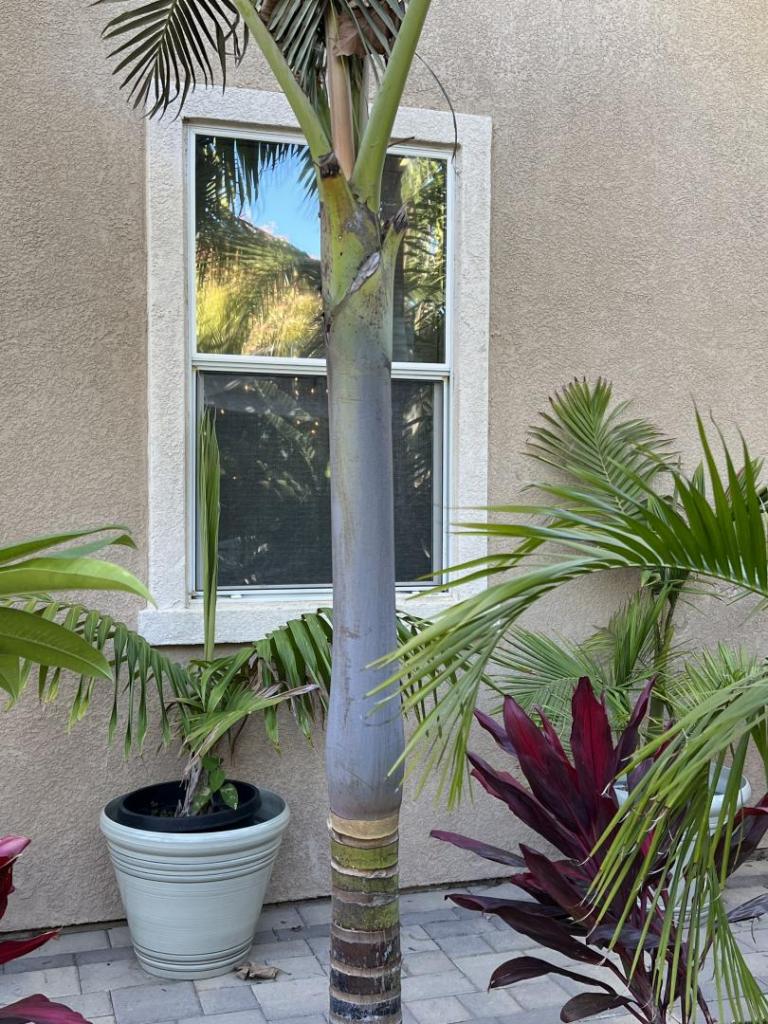

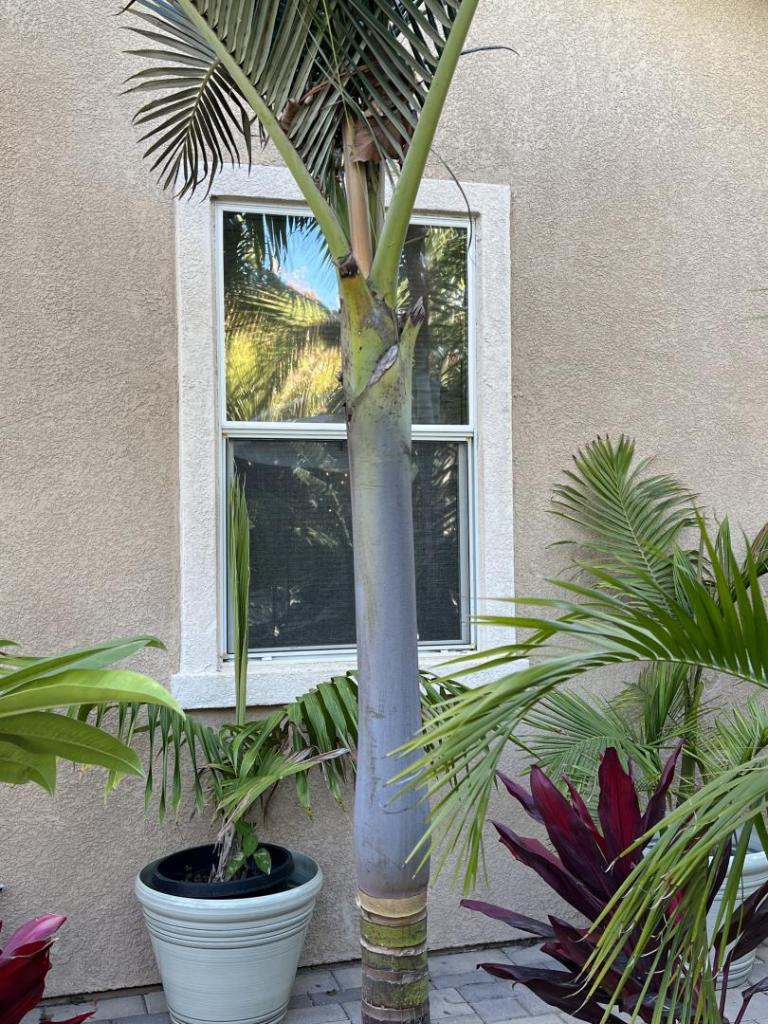
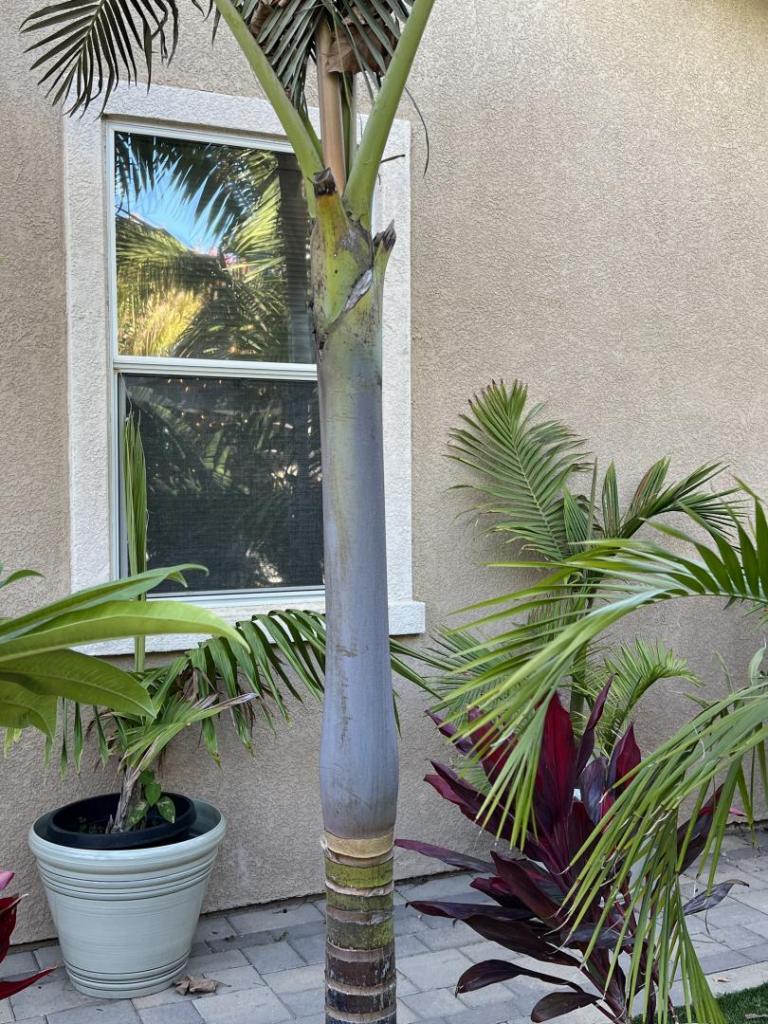
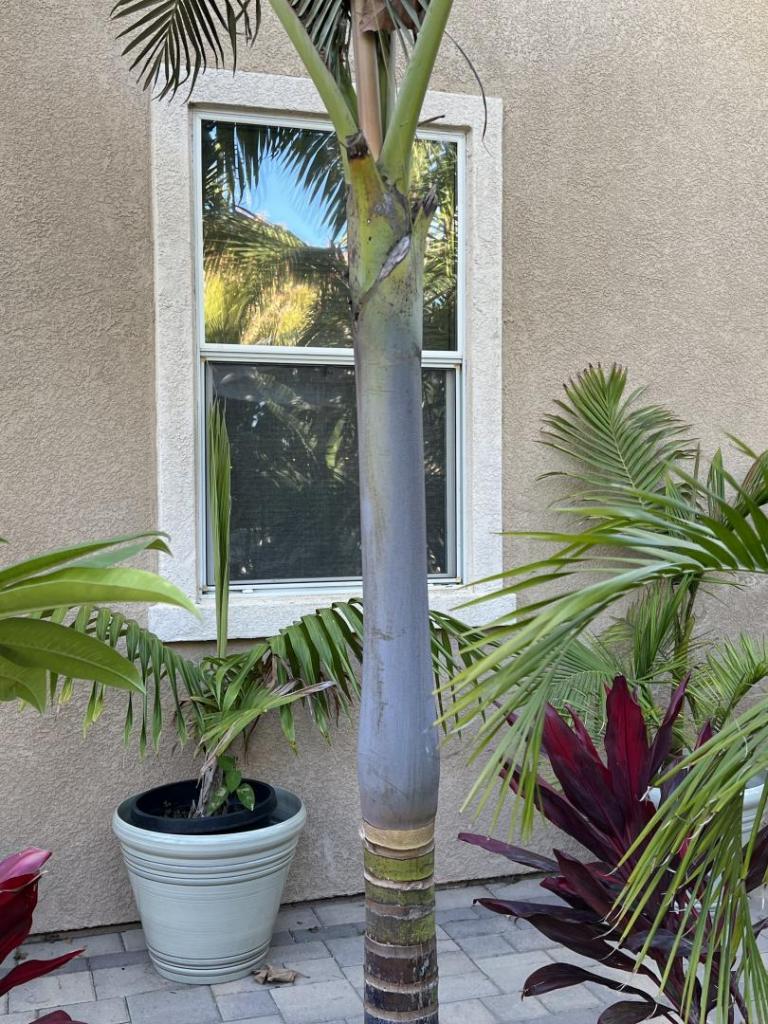
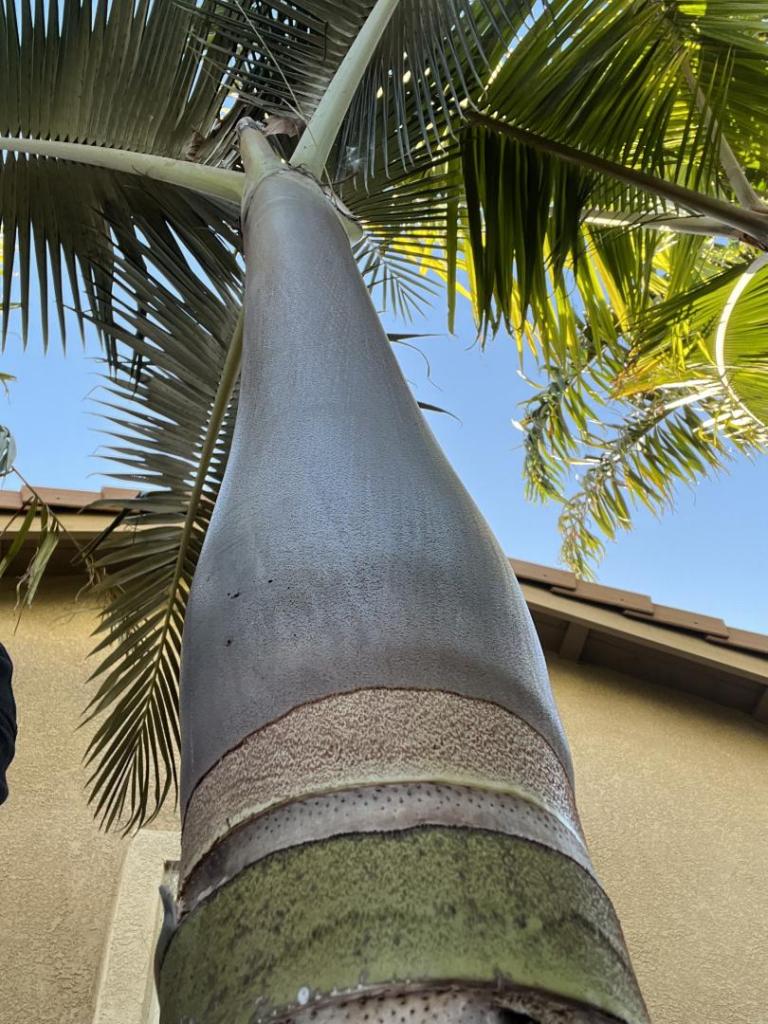
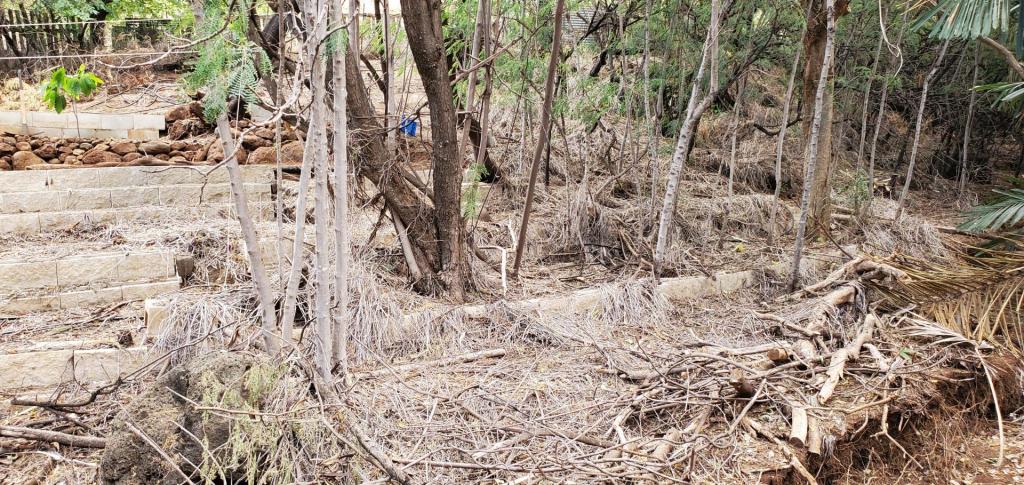
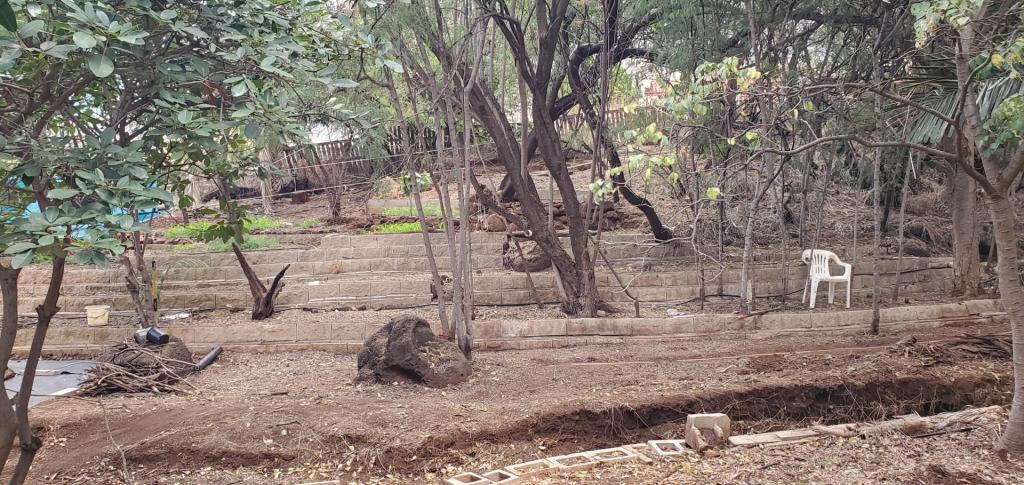
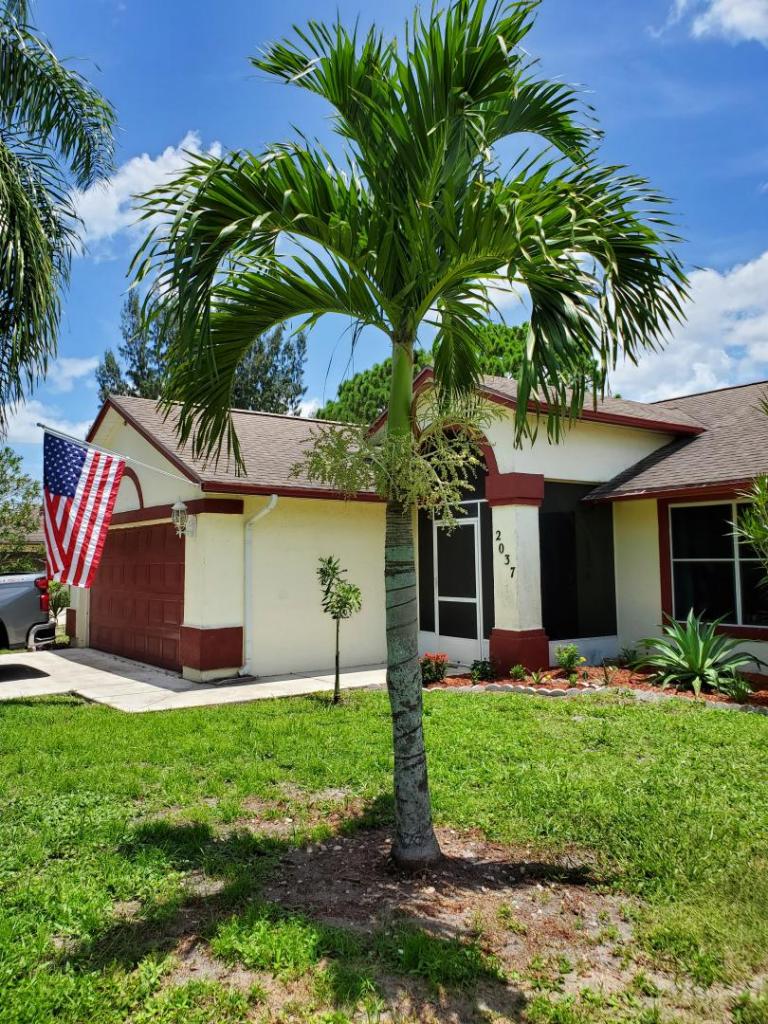
.thumb.jpg.3ef8c9975eaaa52ff7798b30f330f565.jpg)
